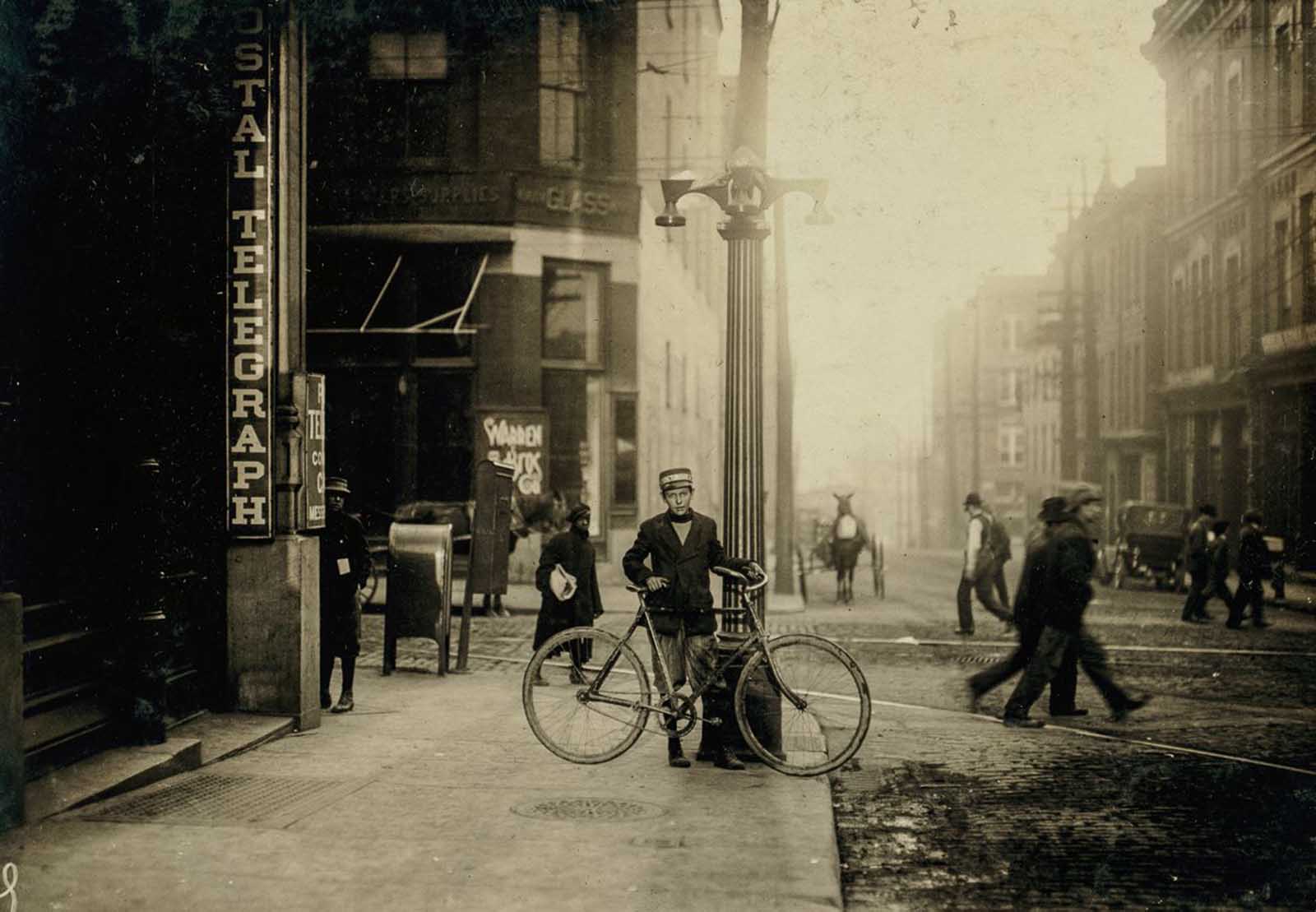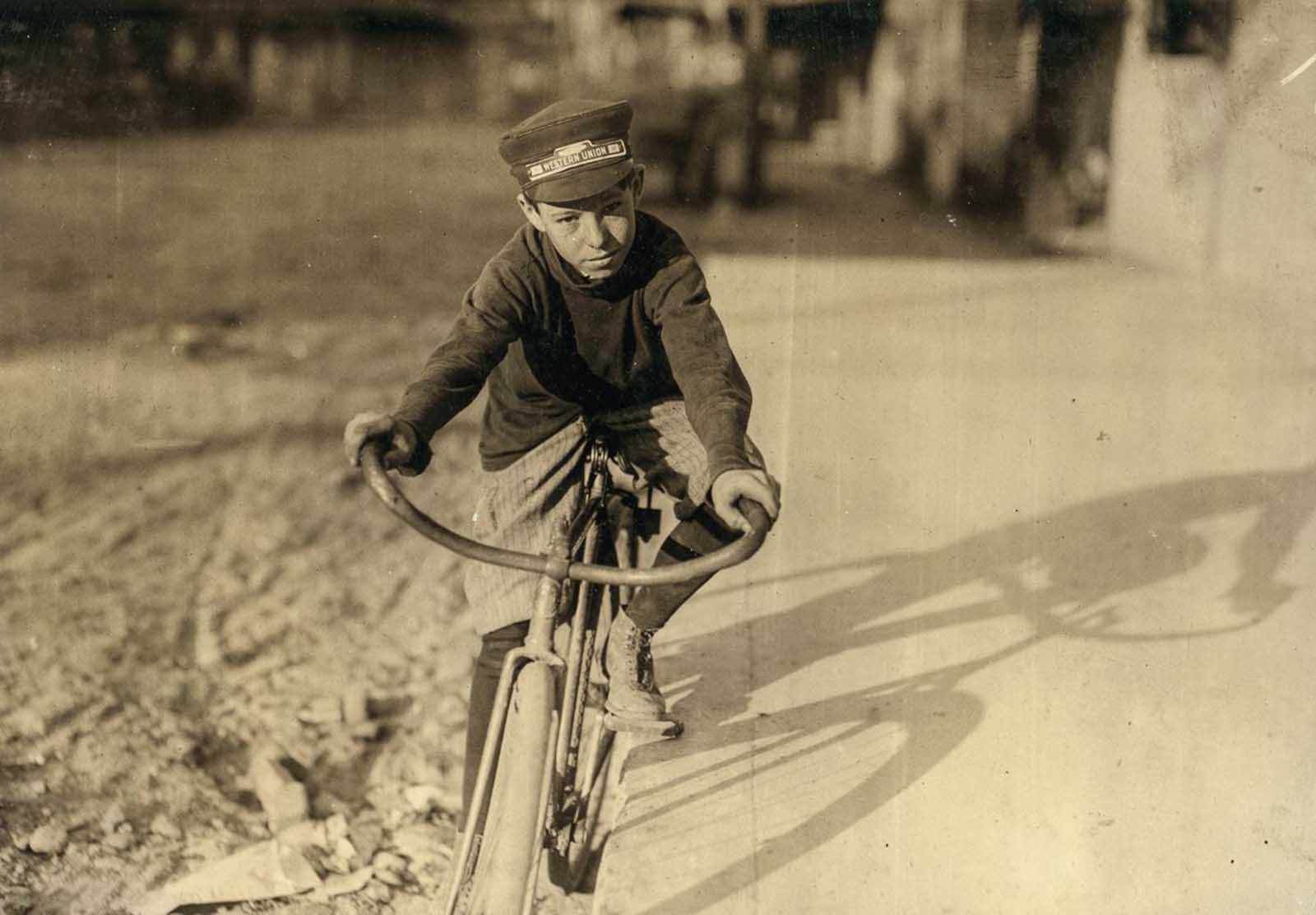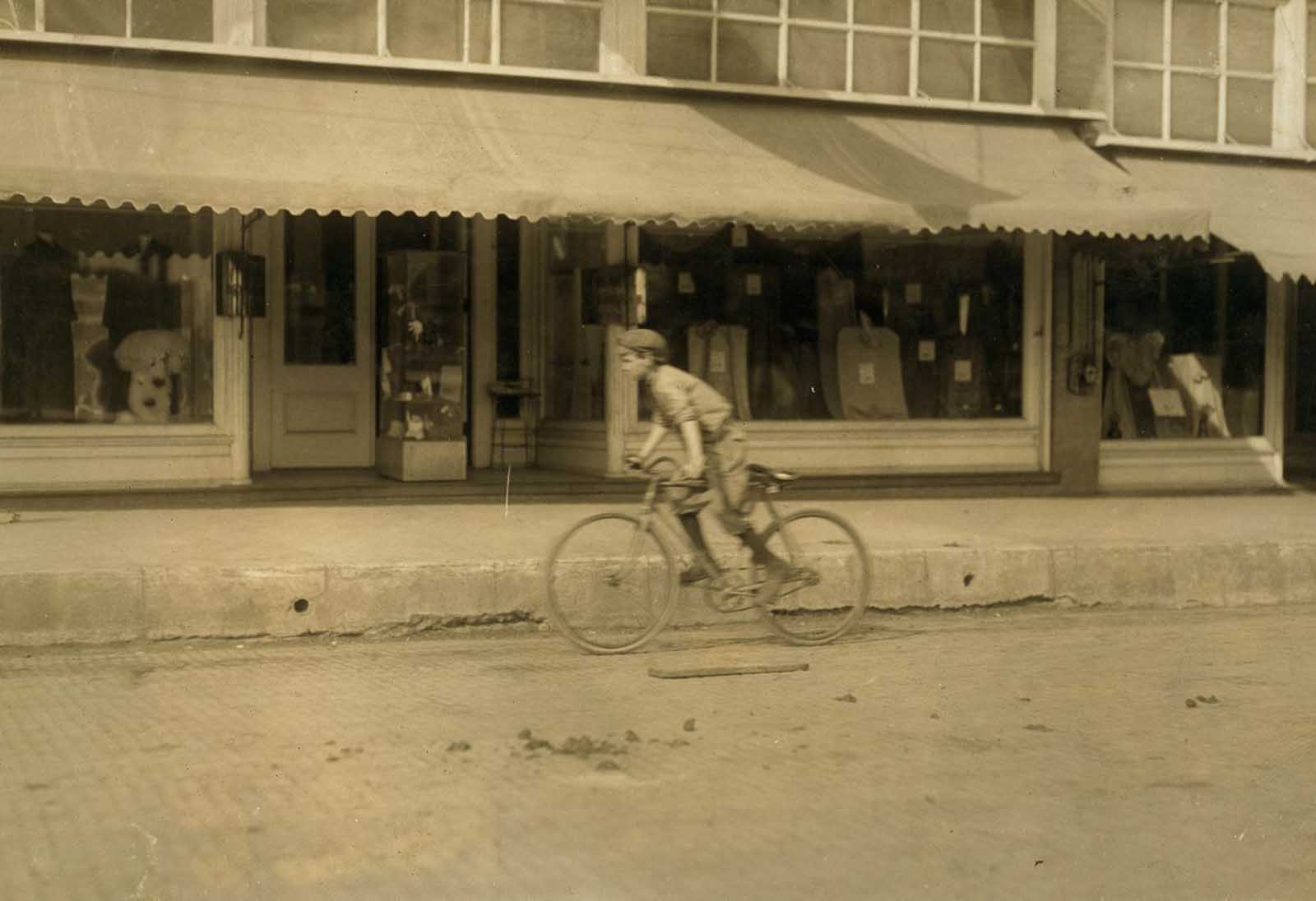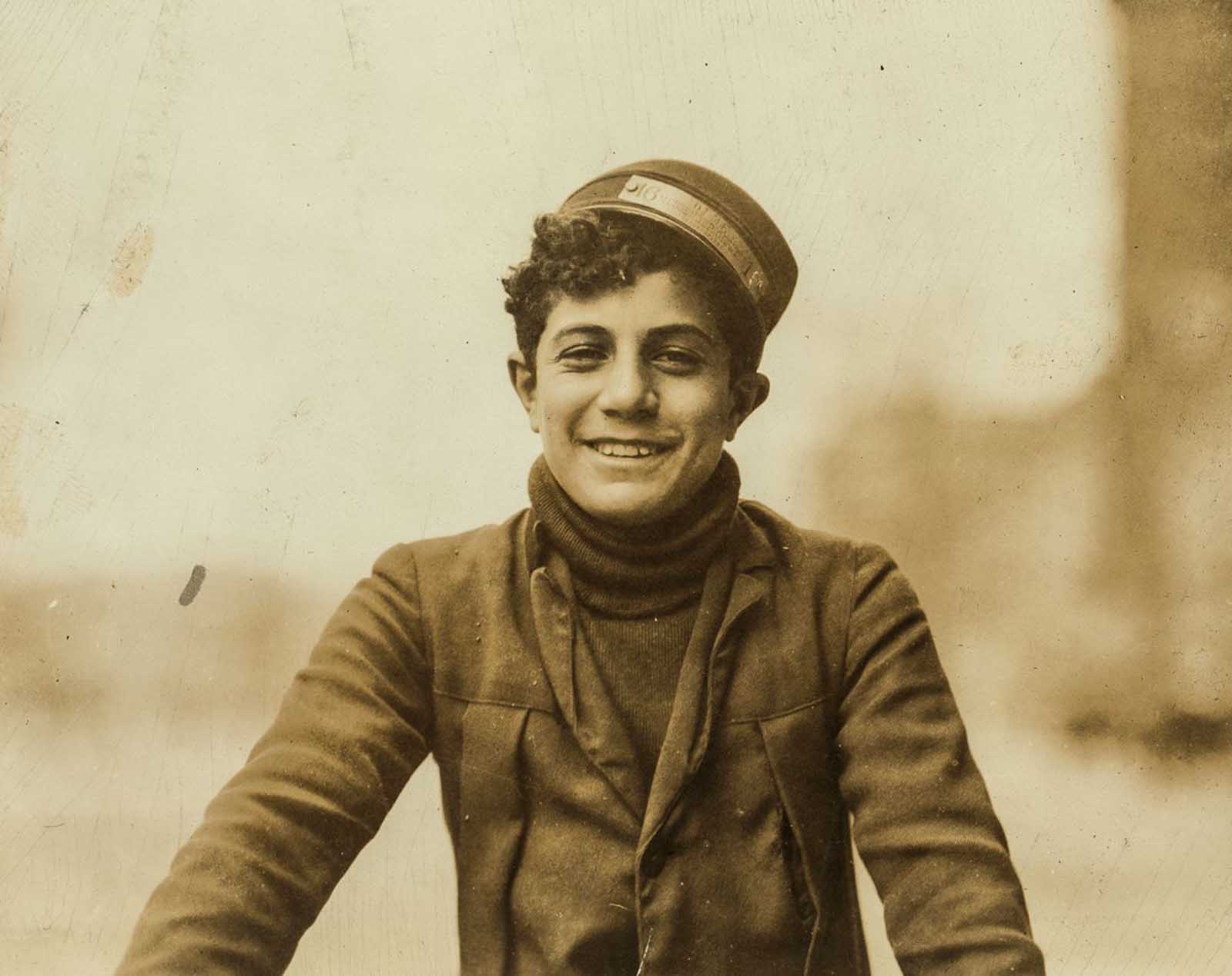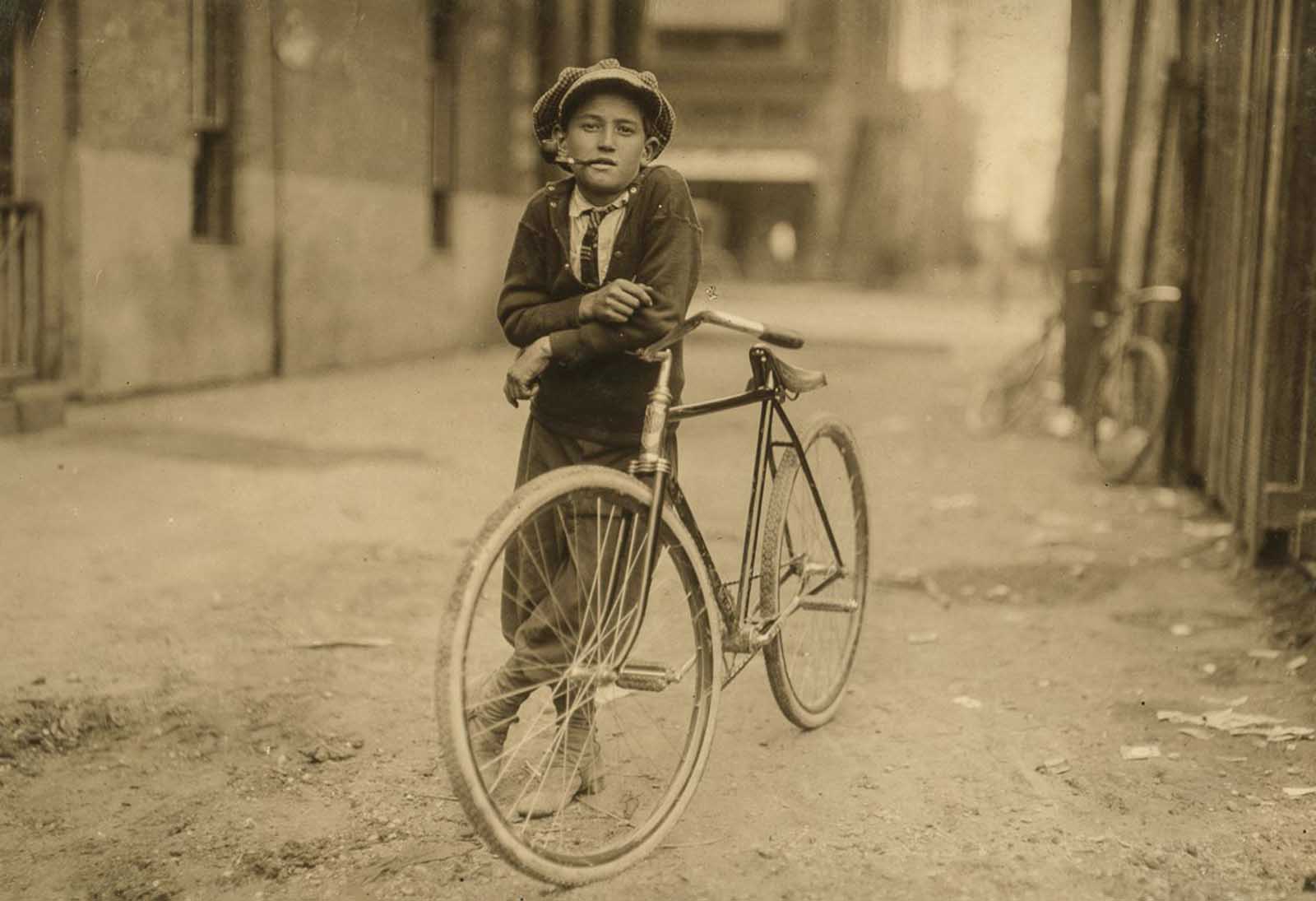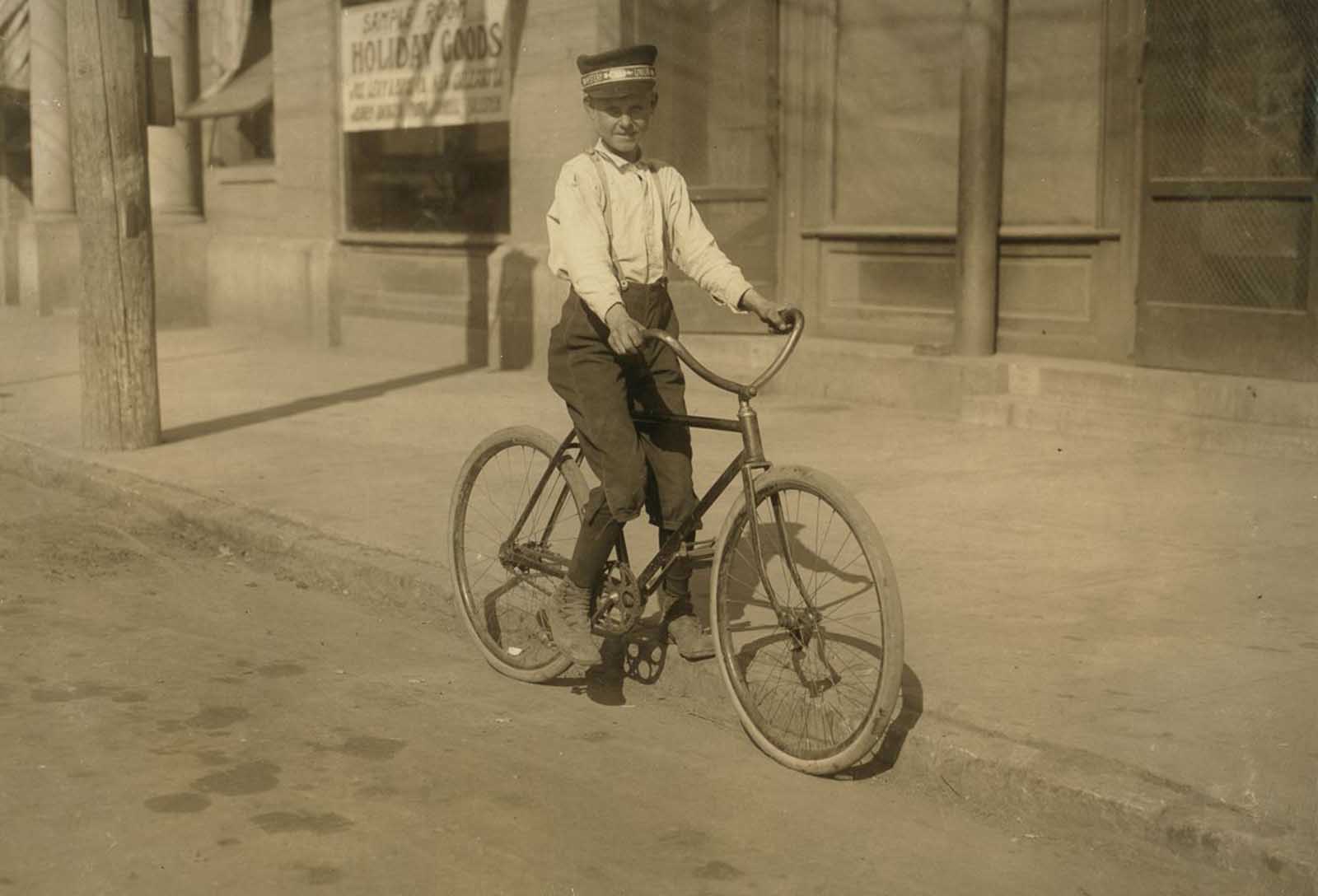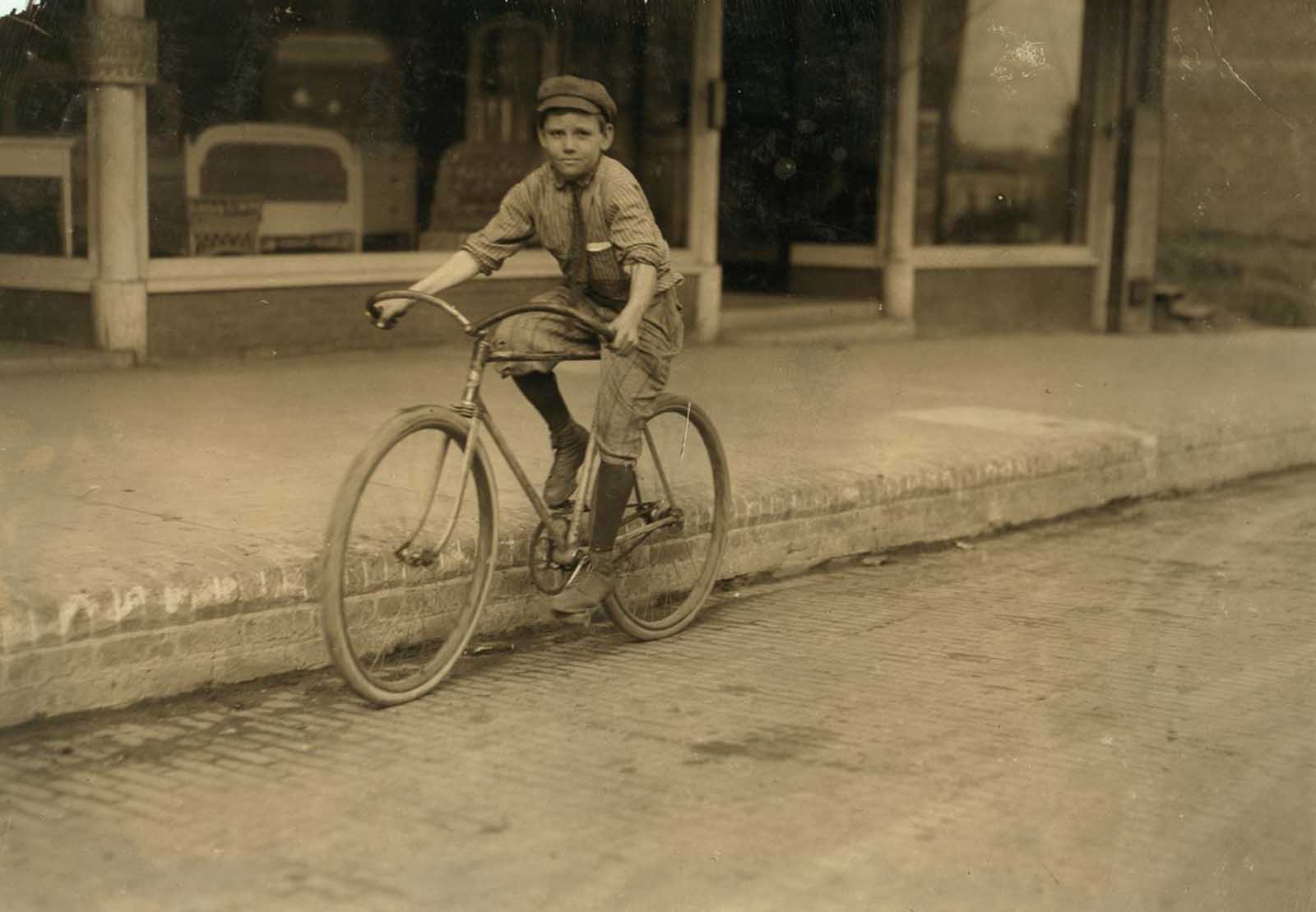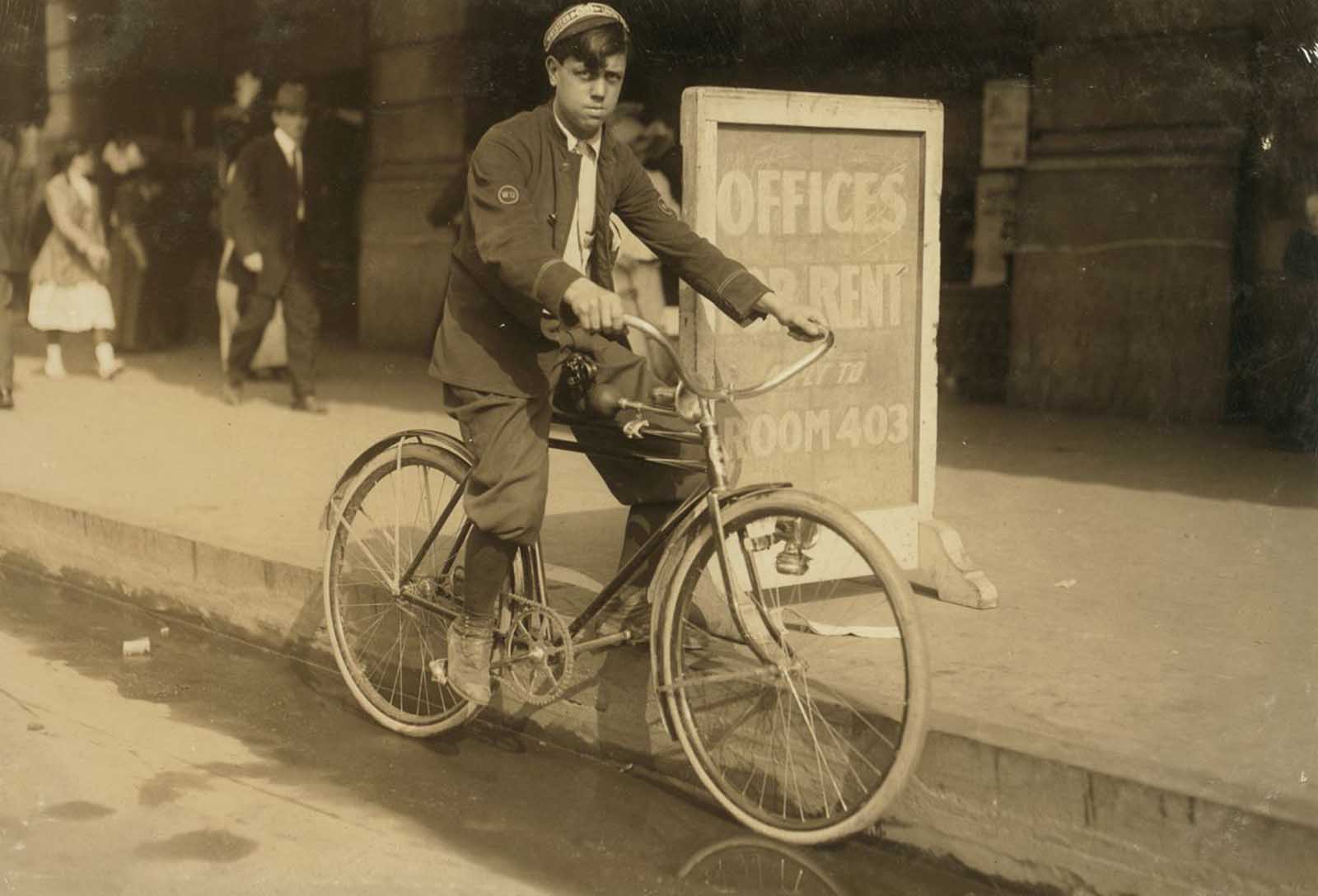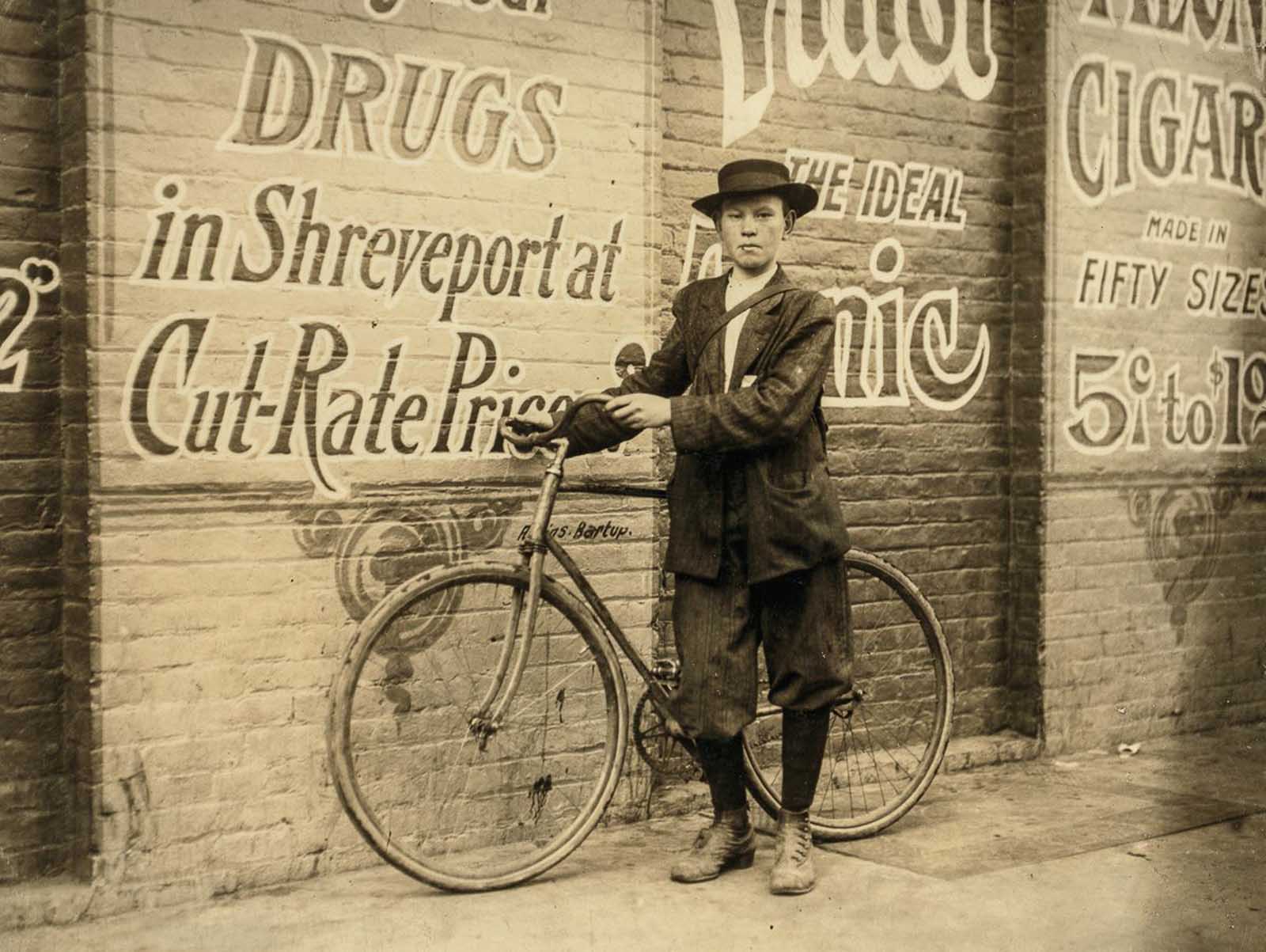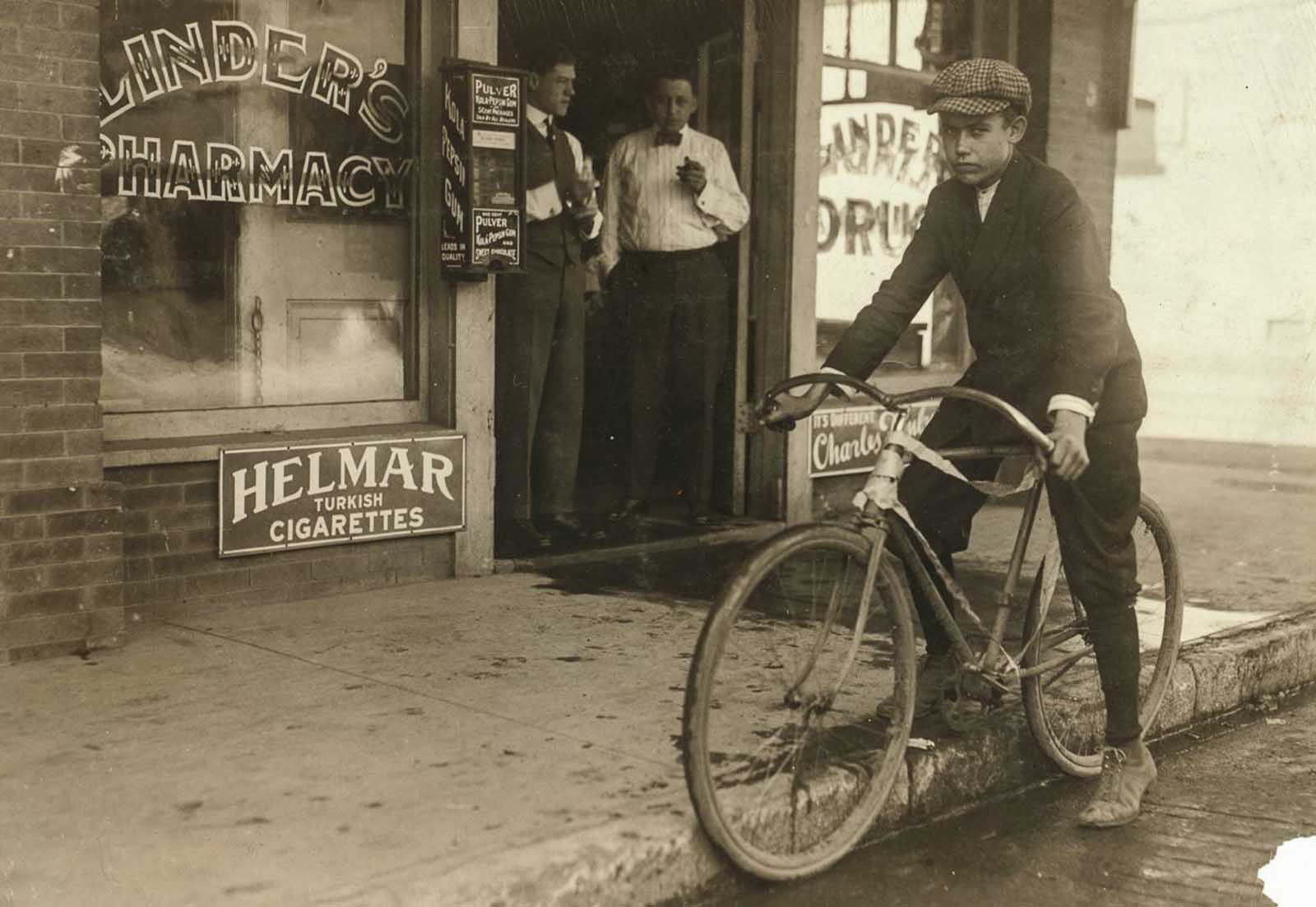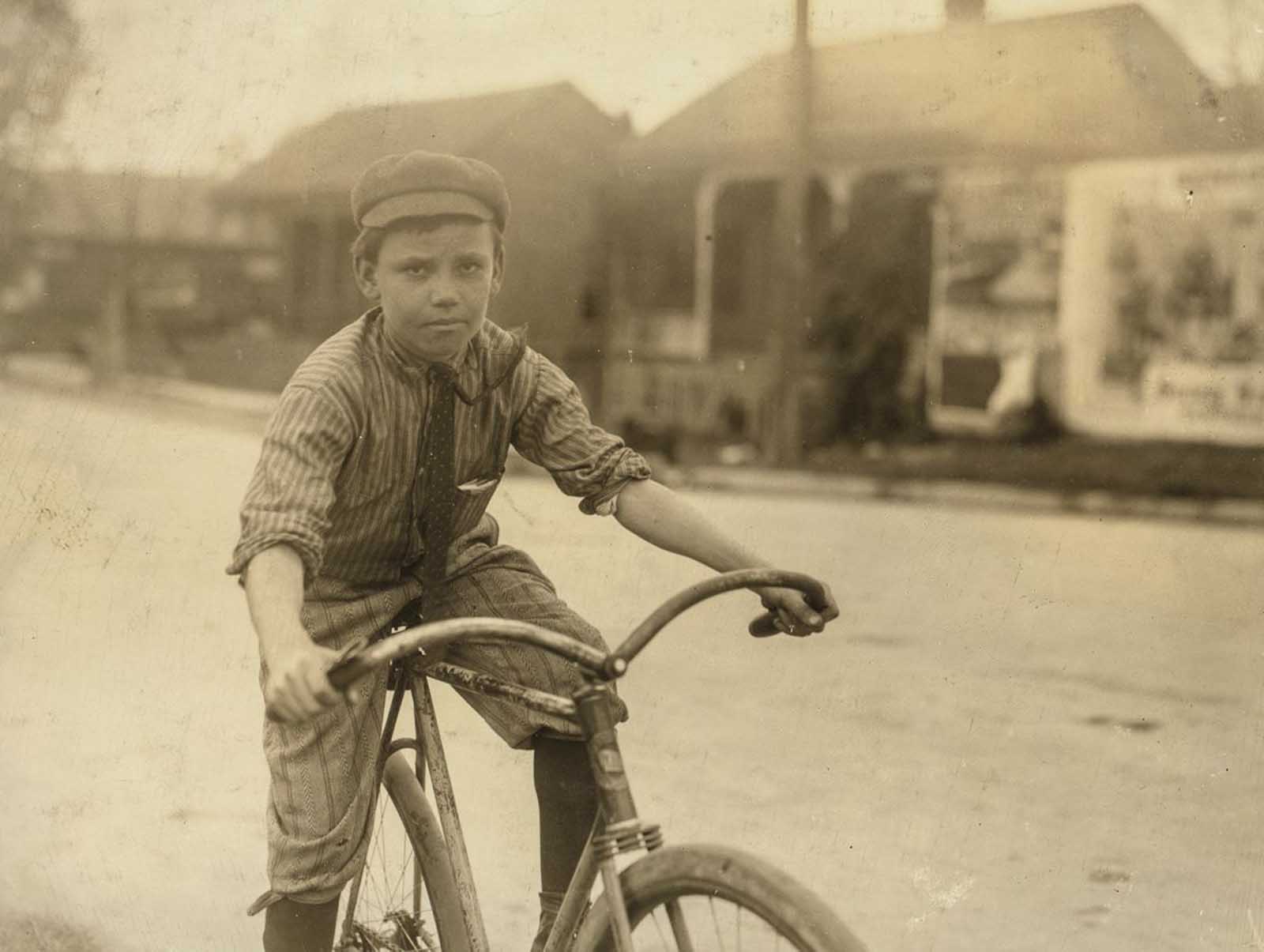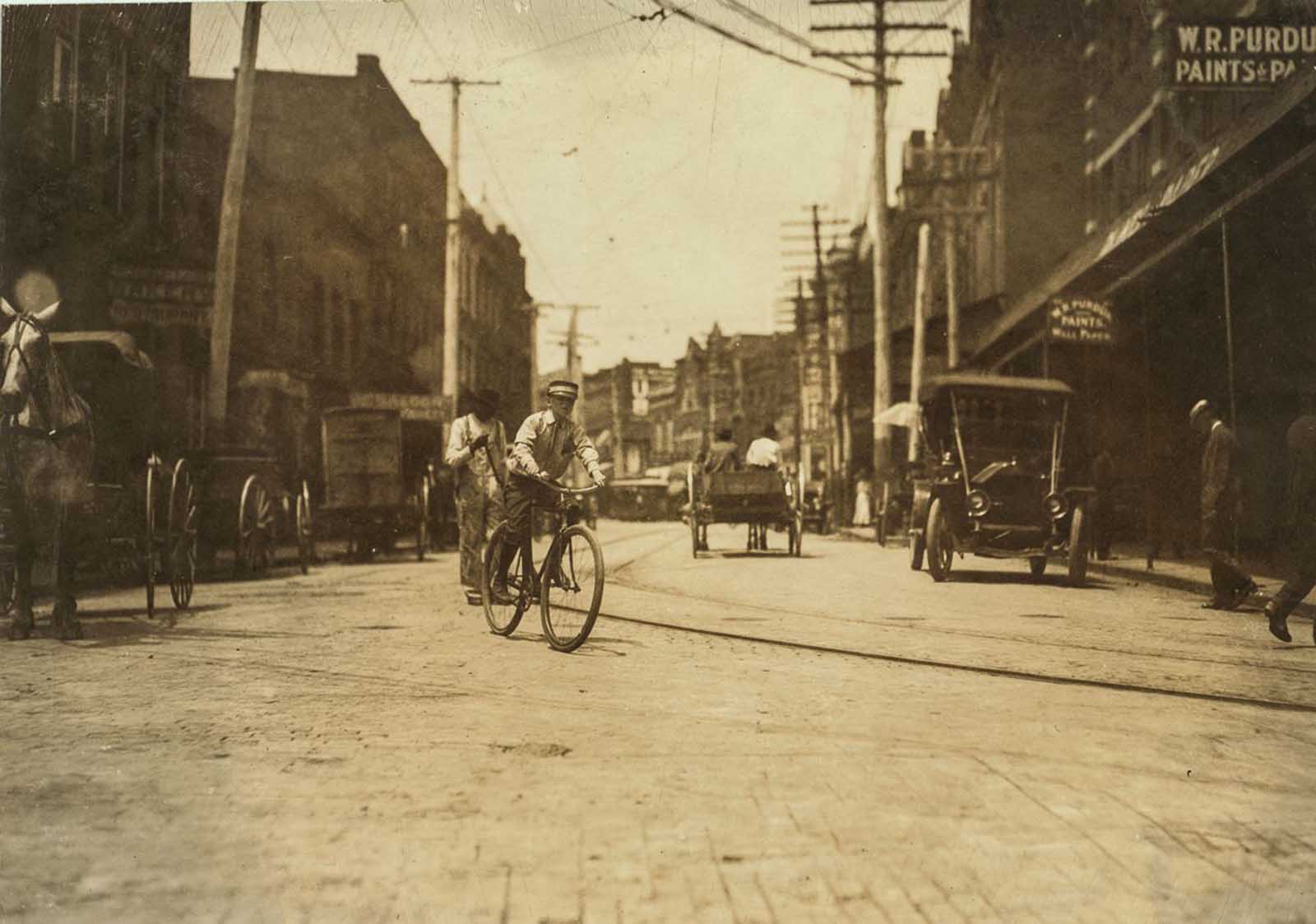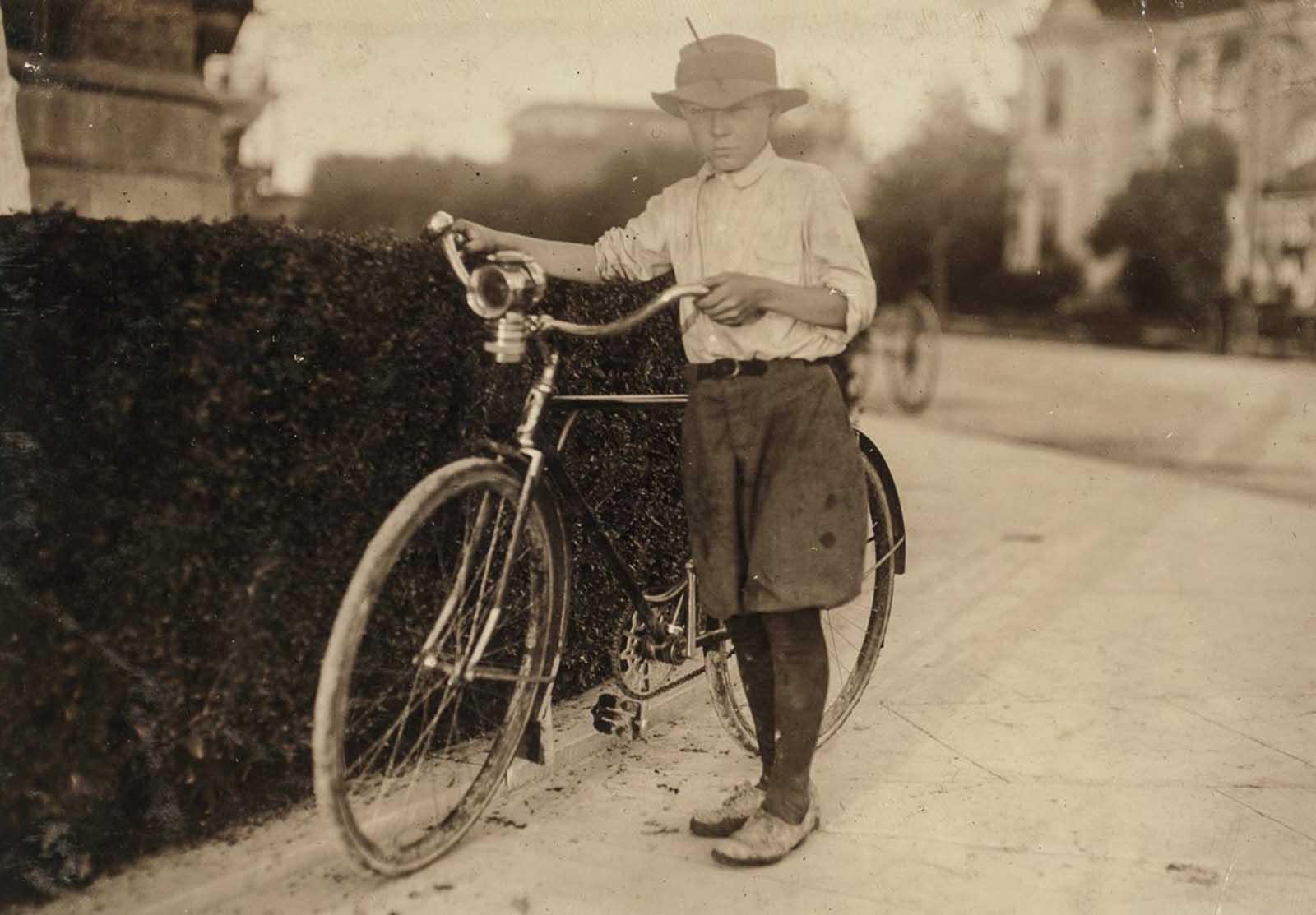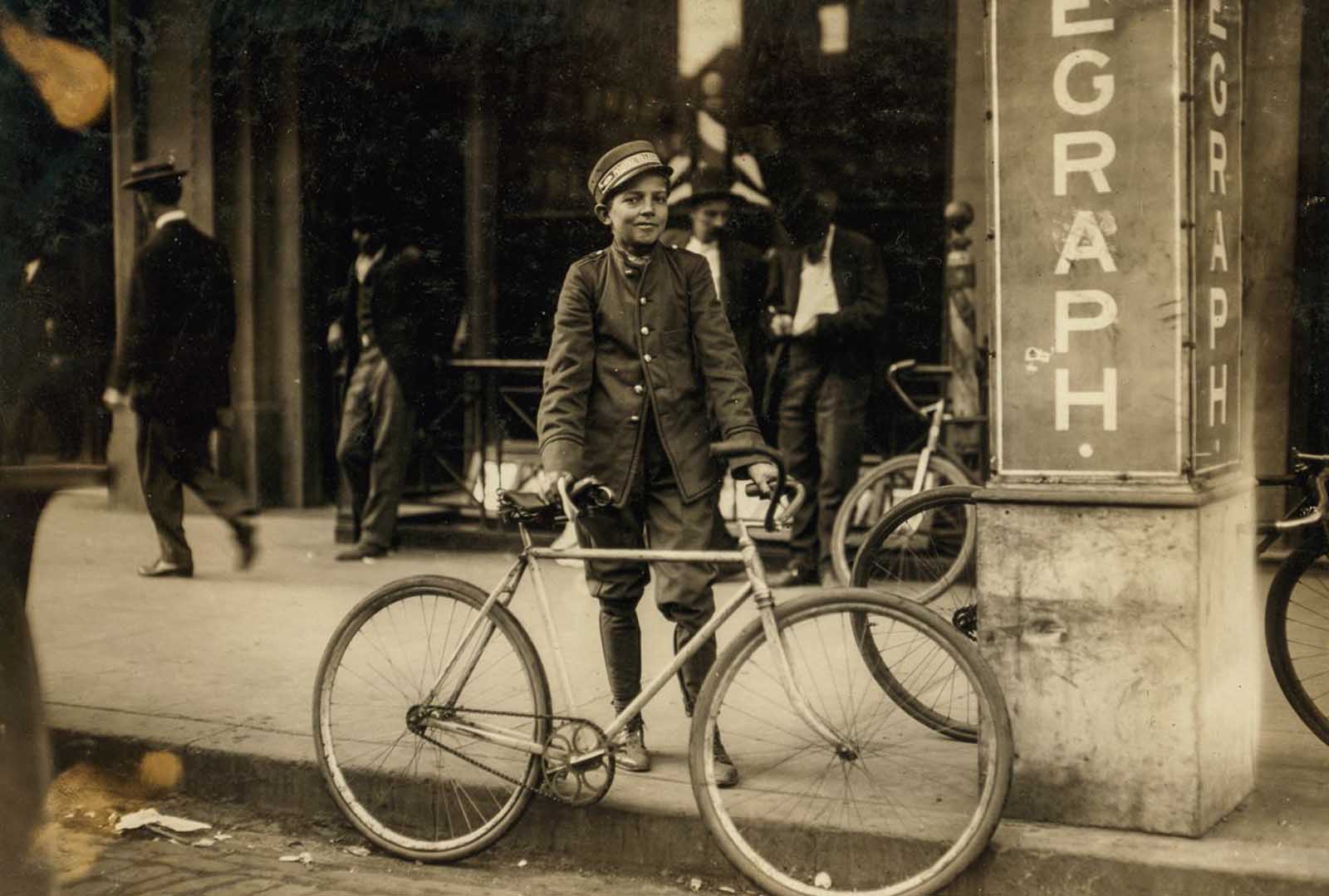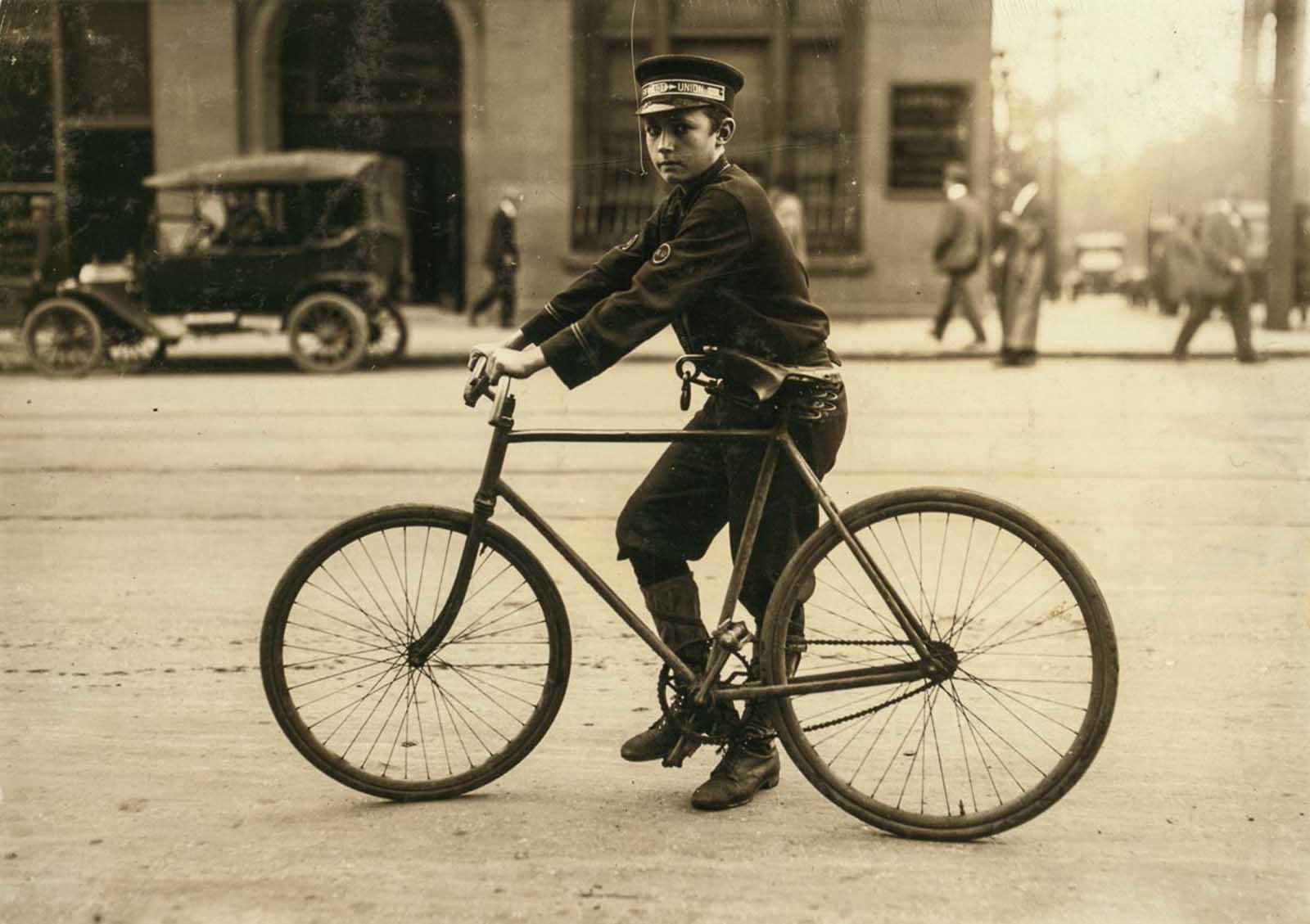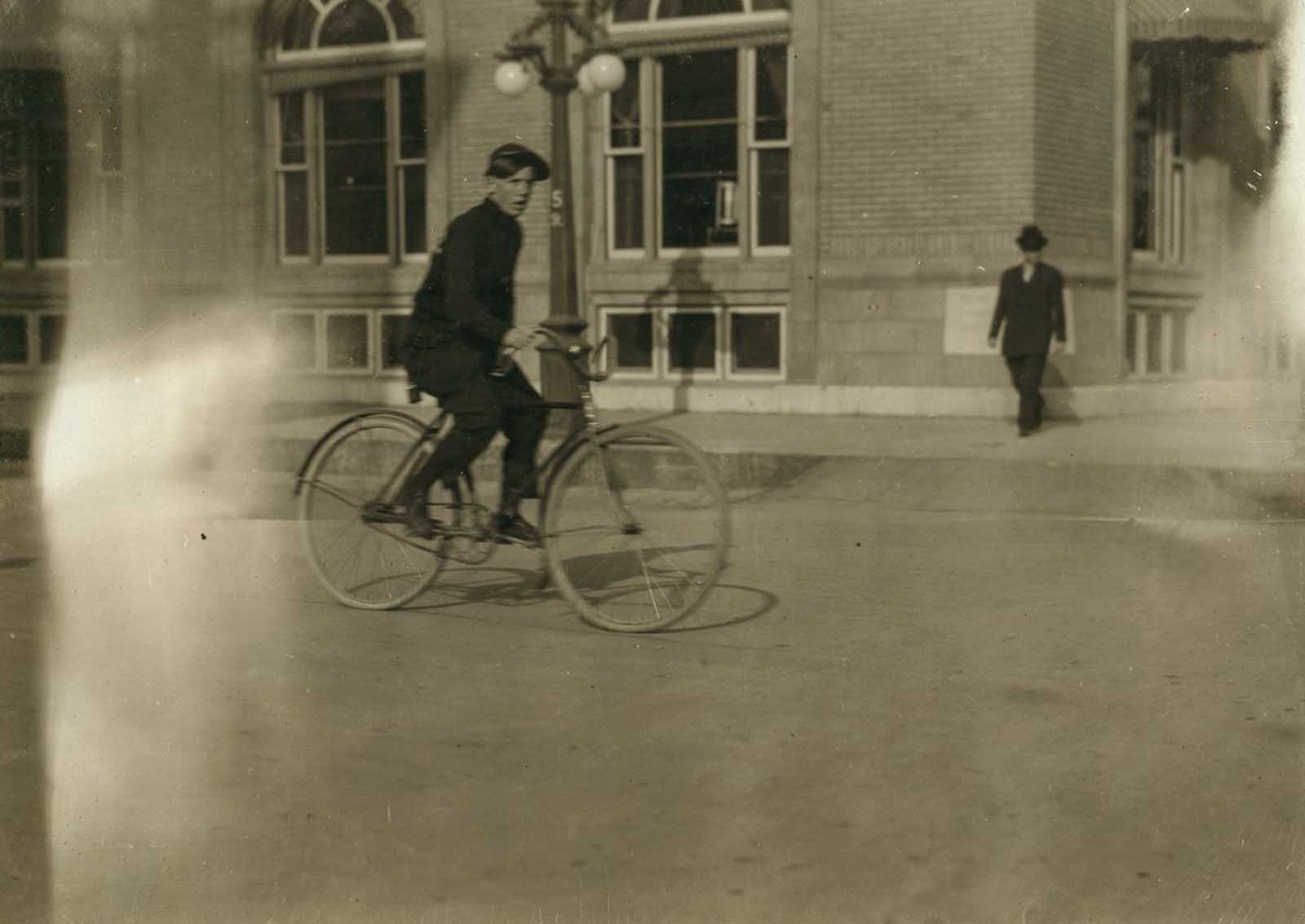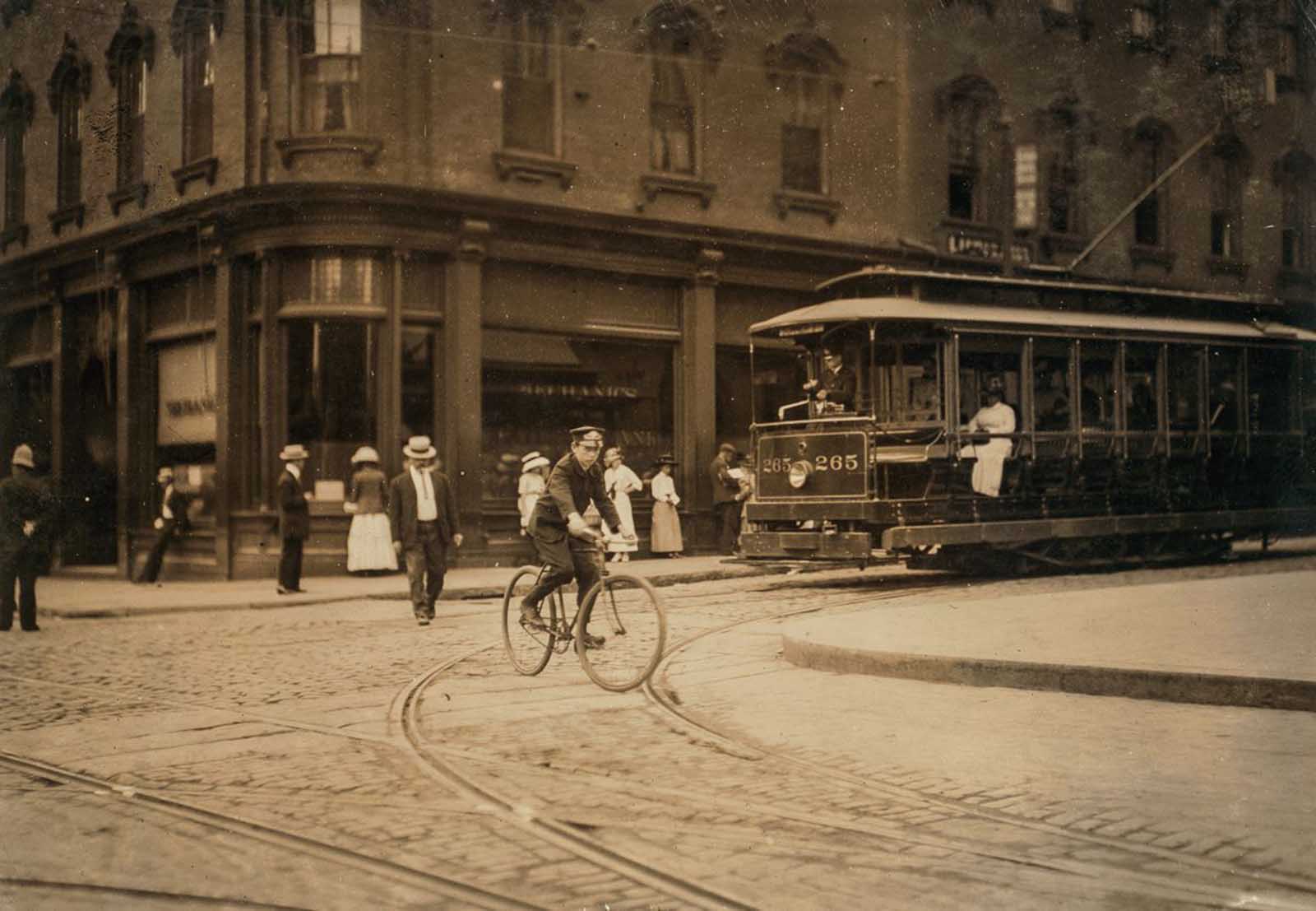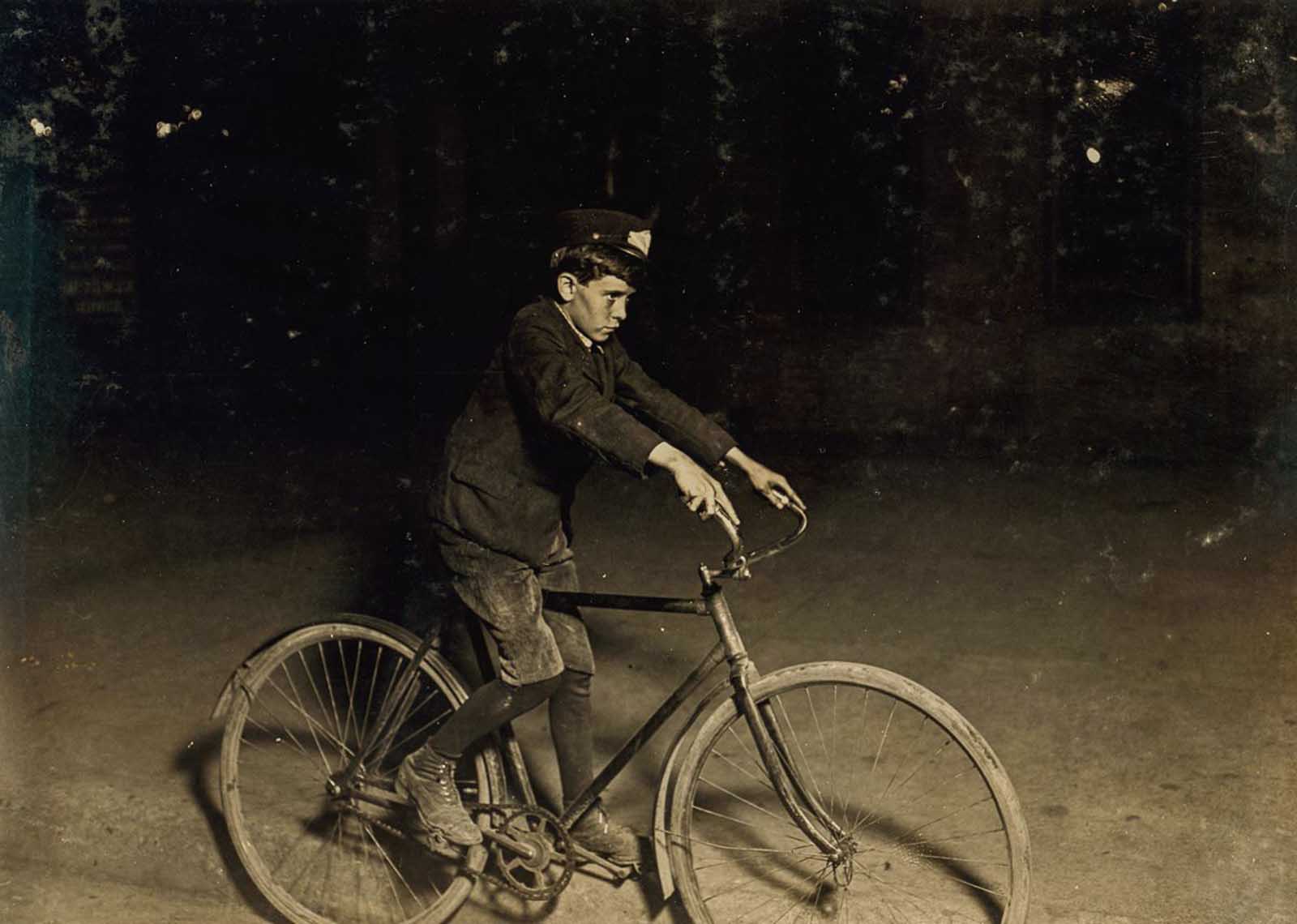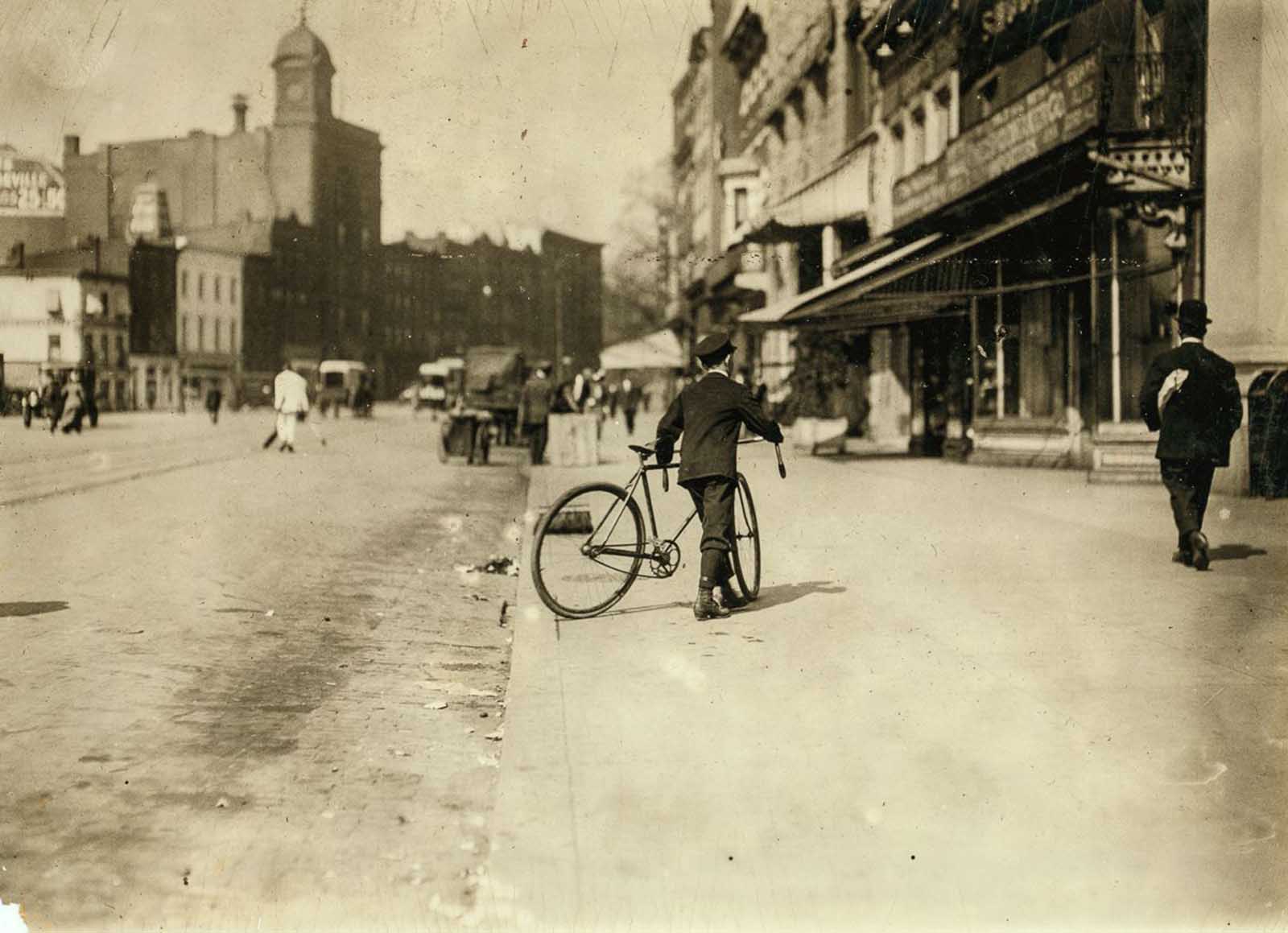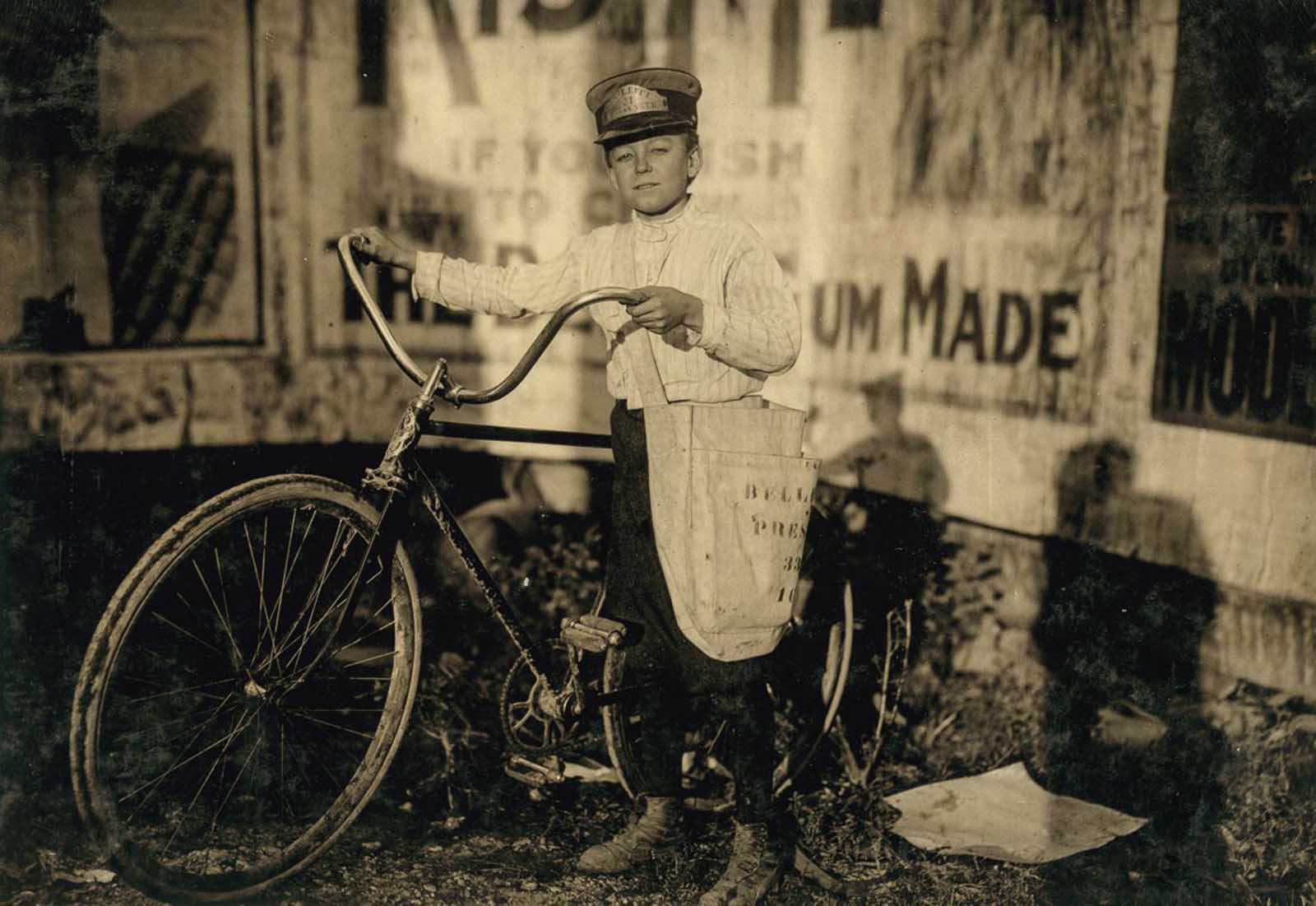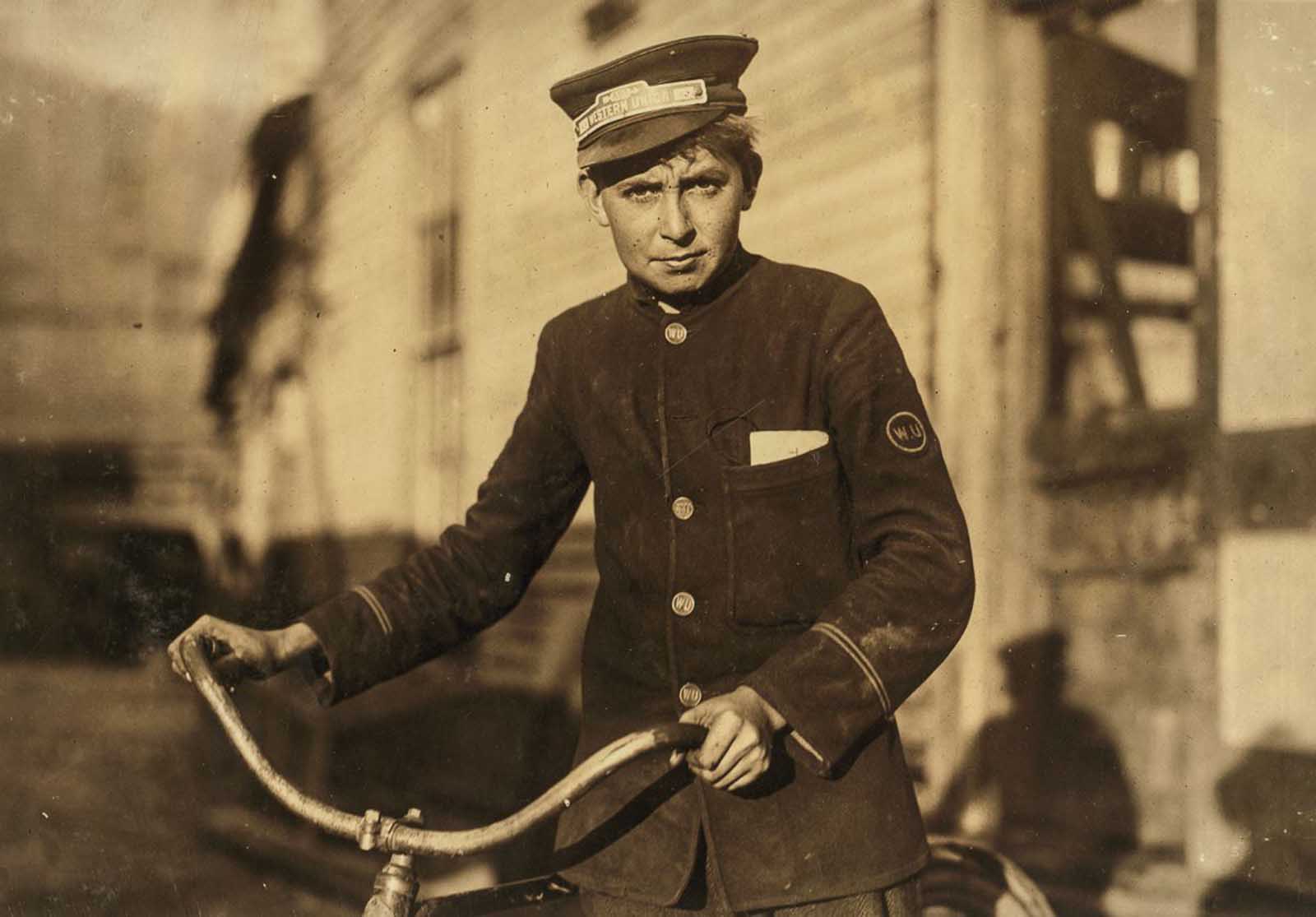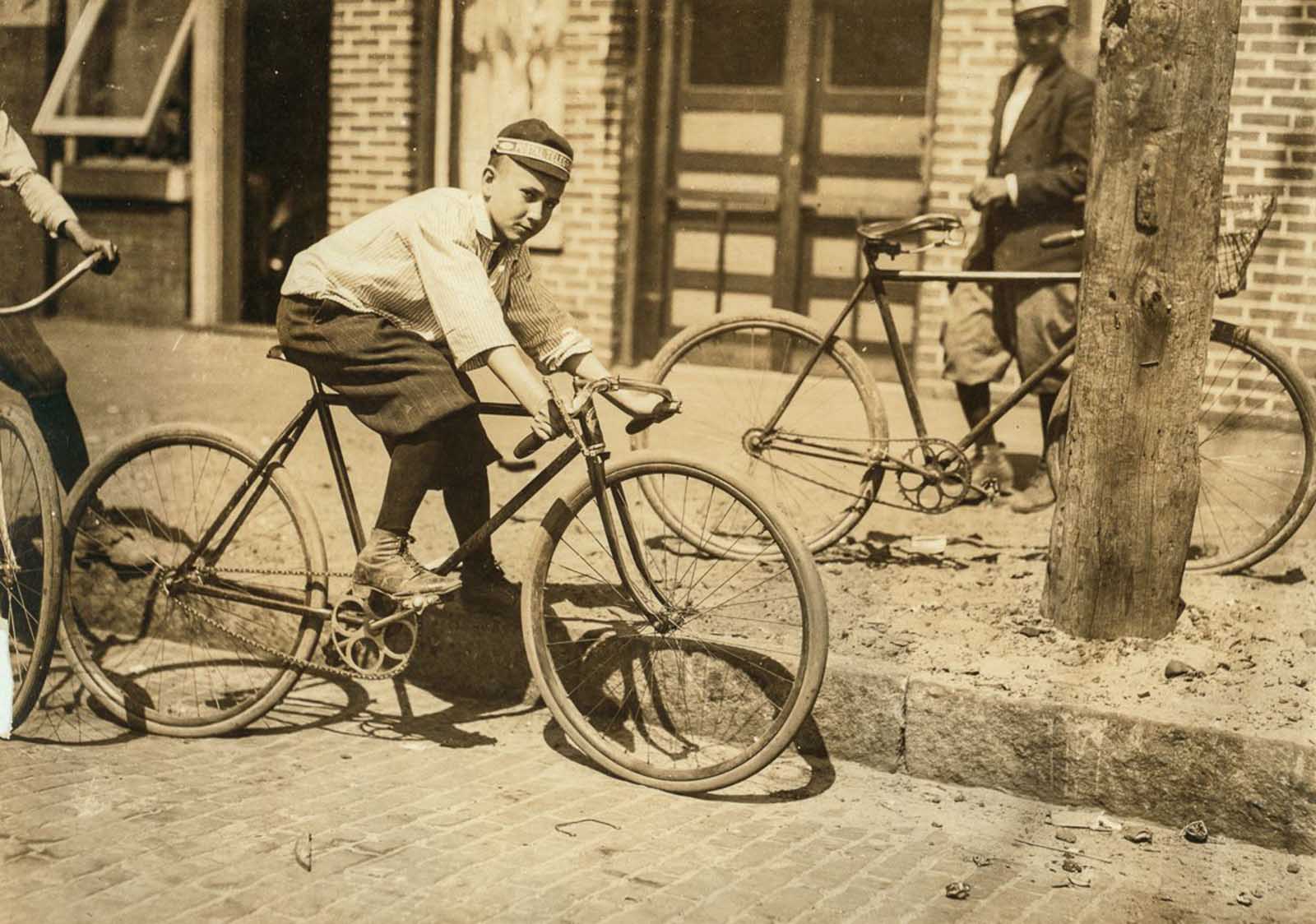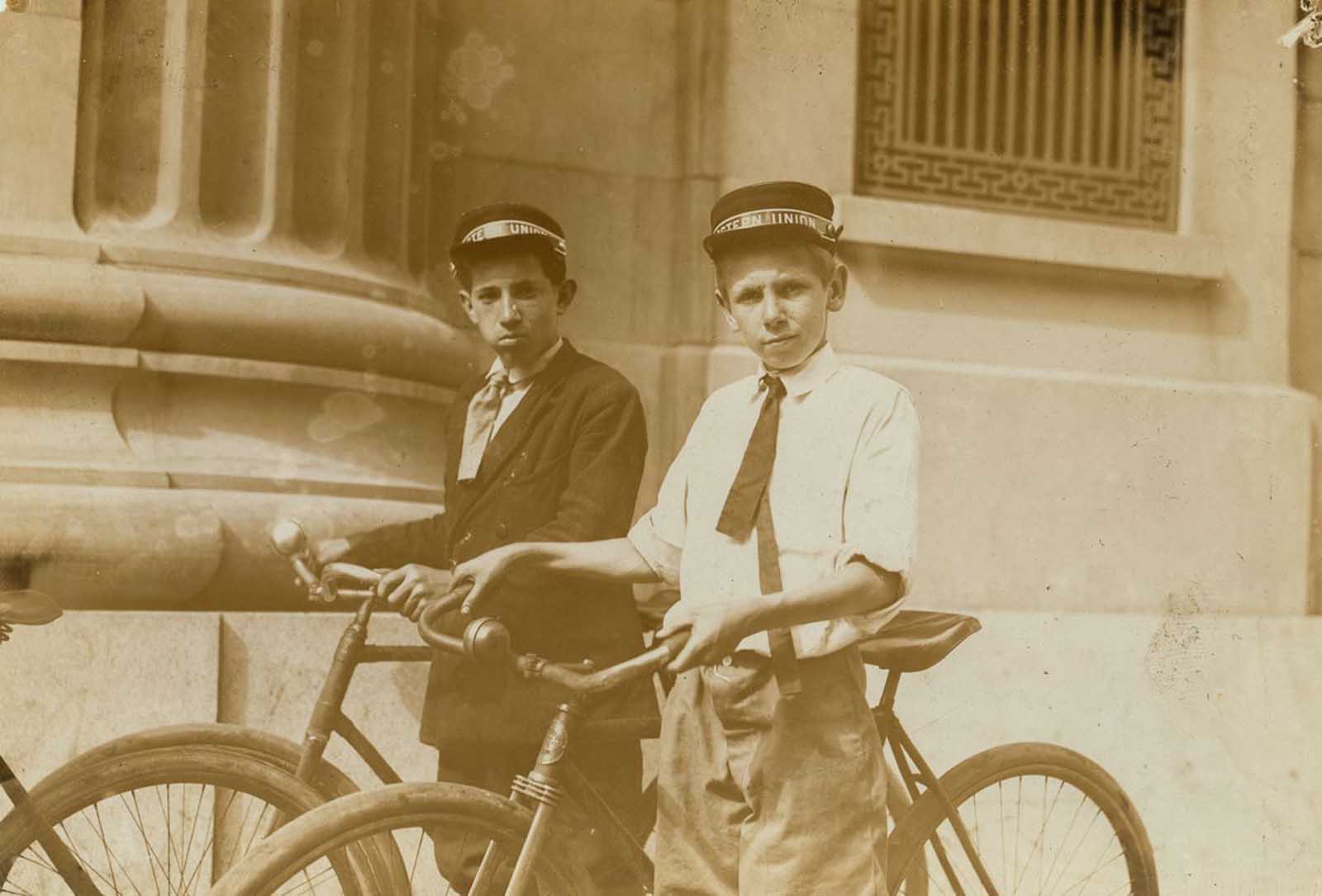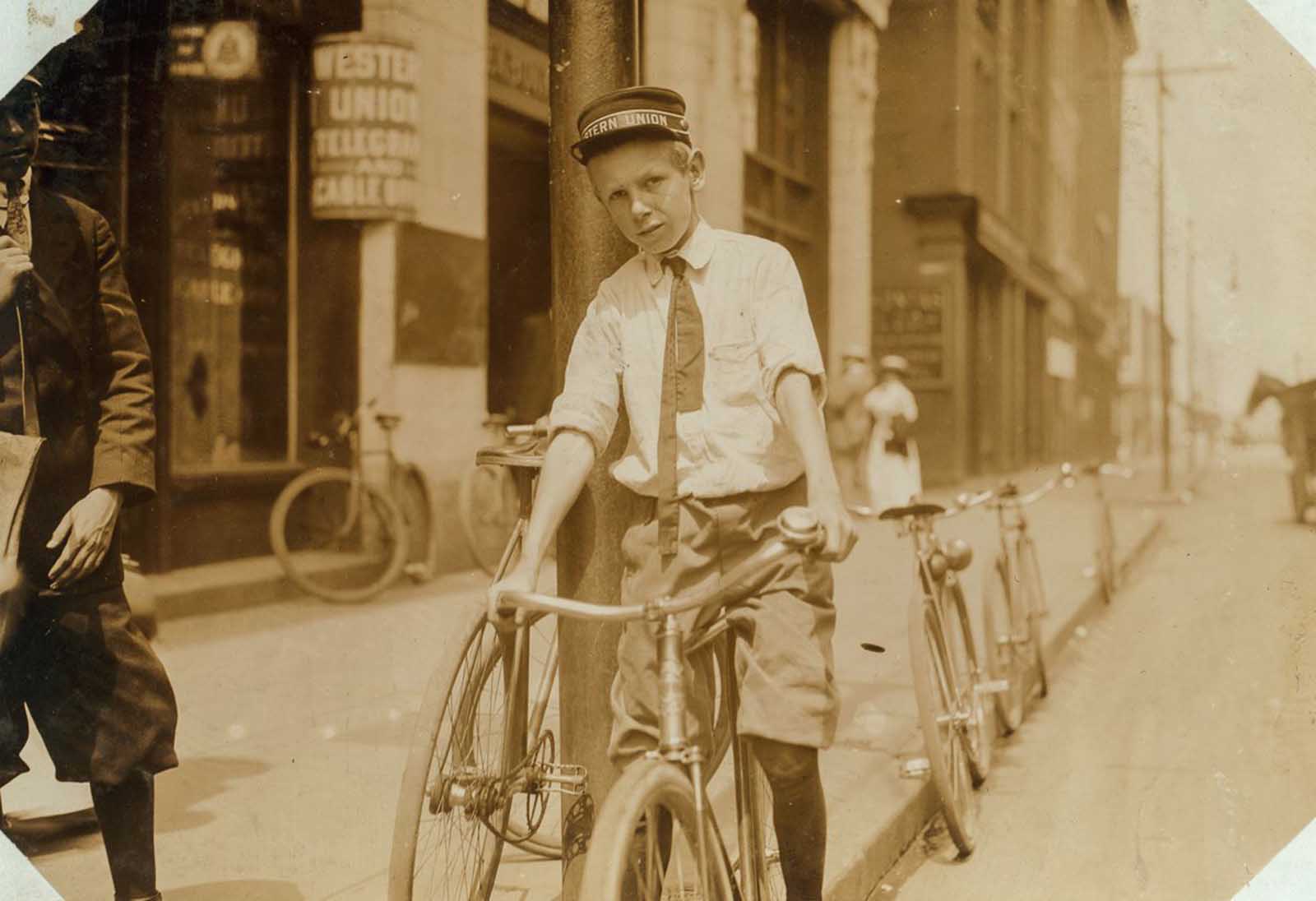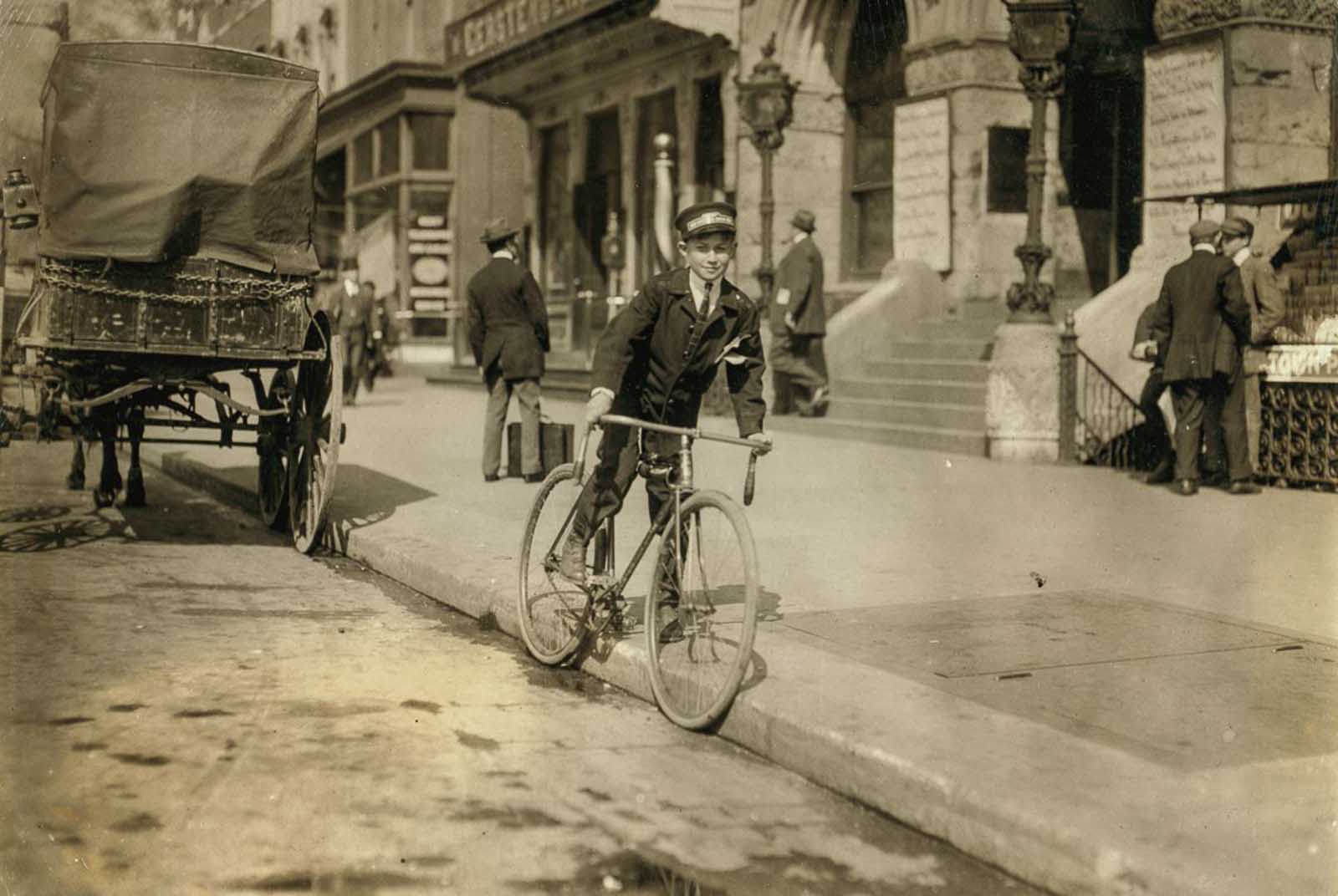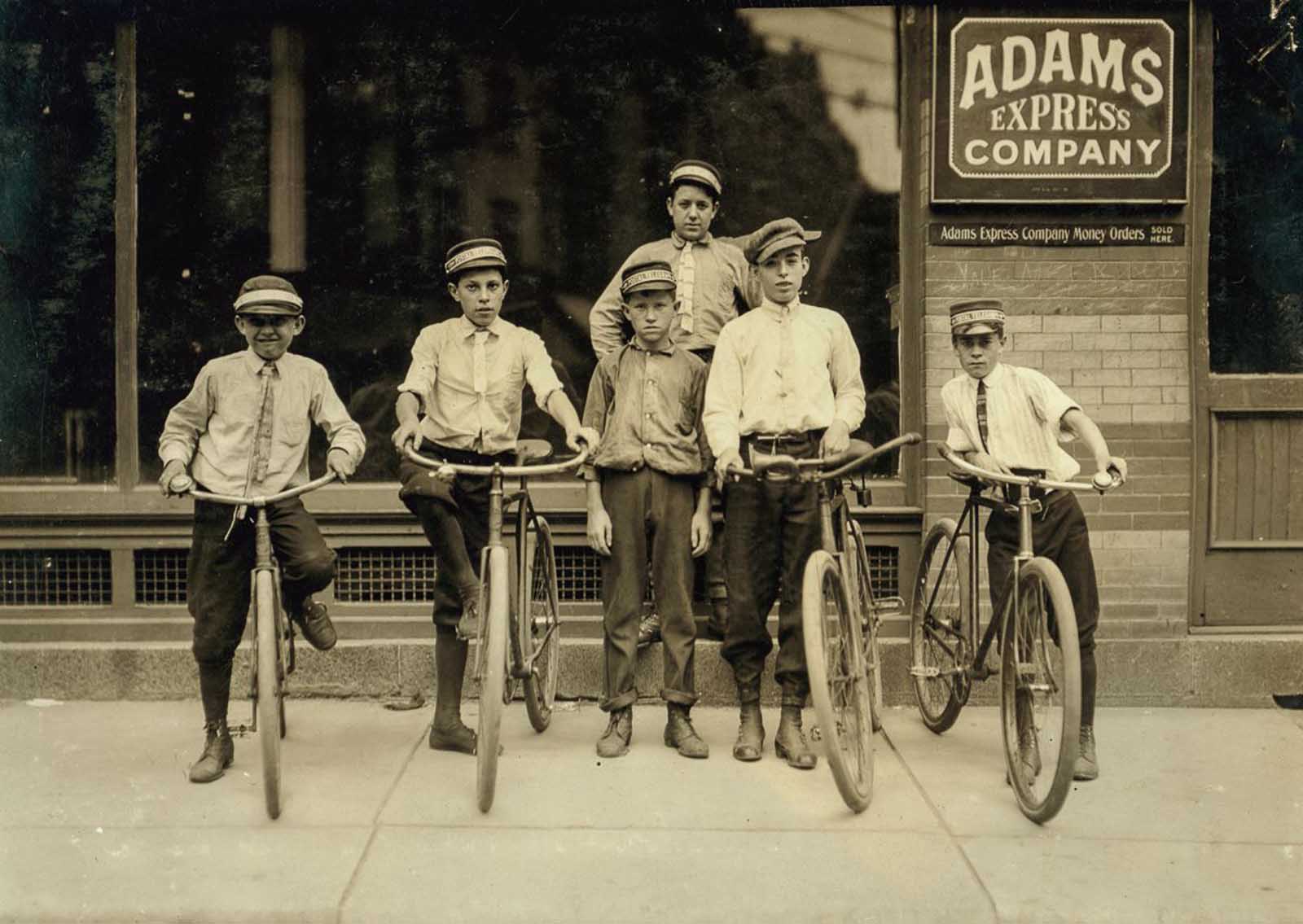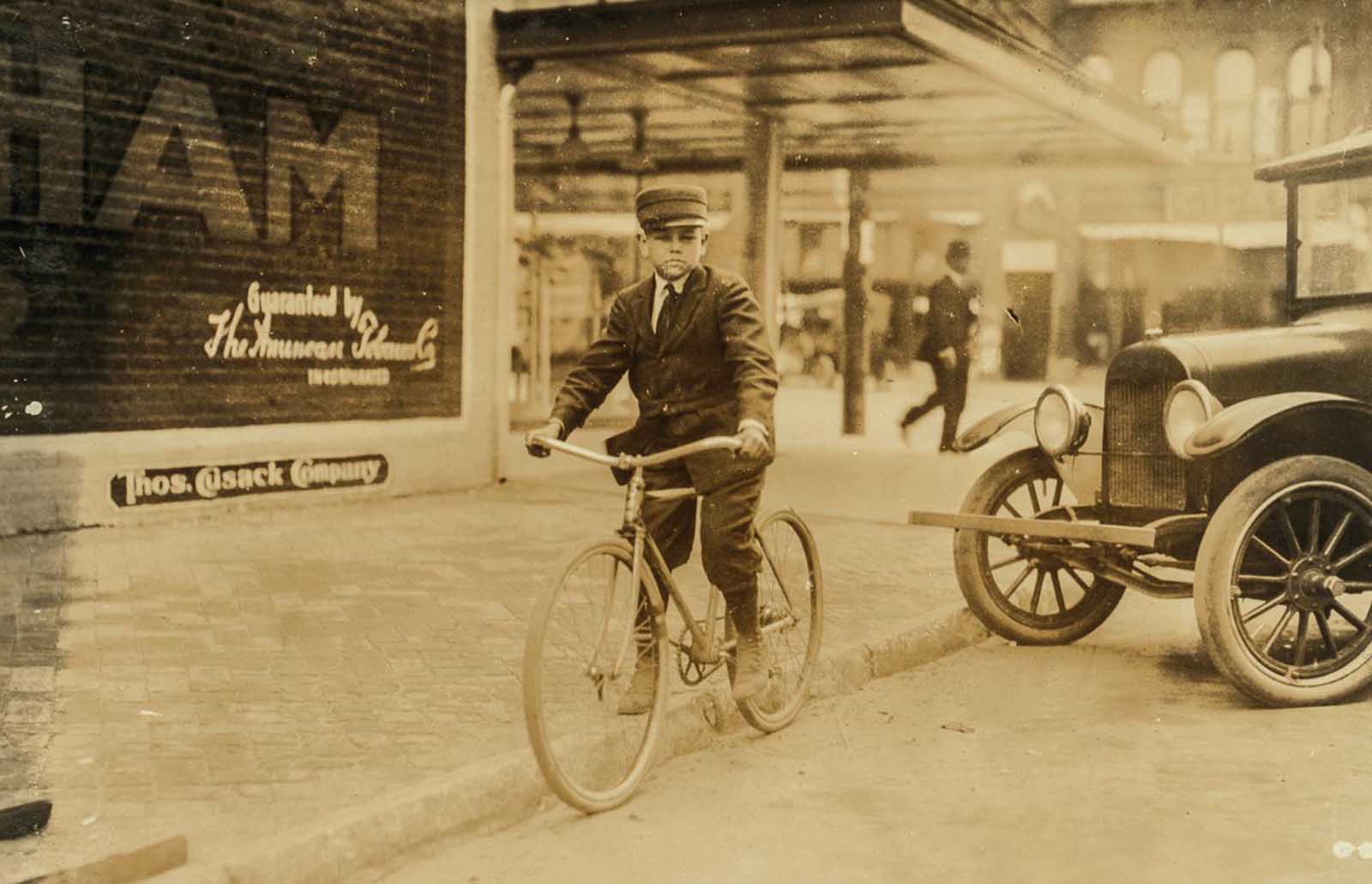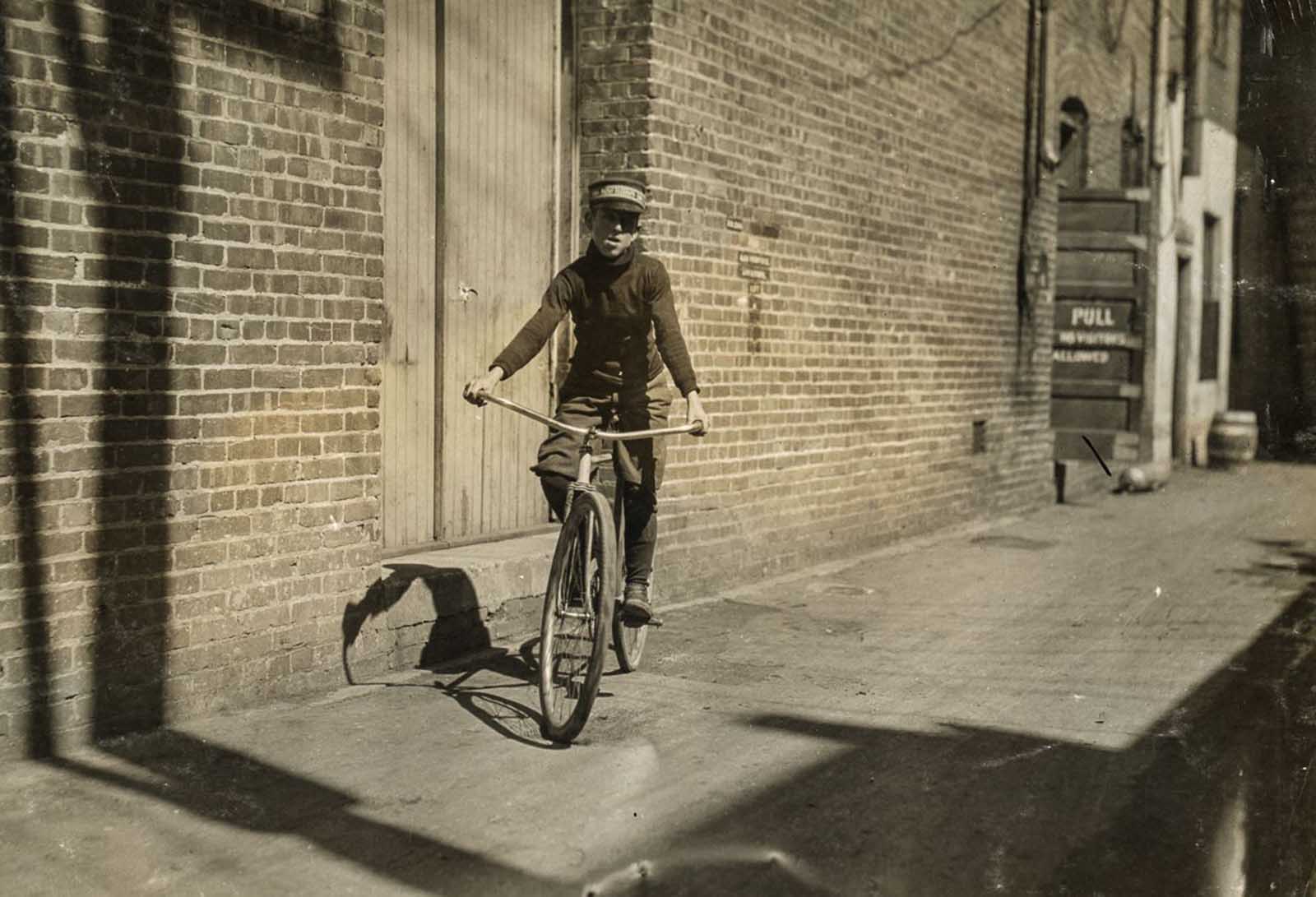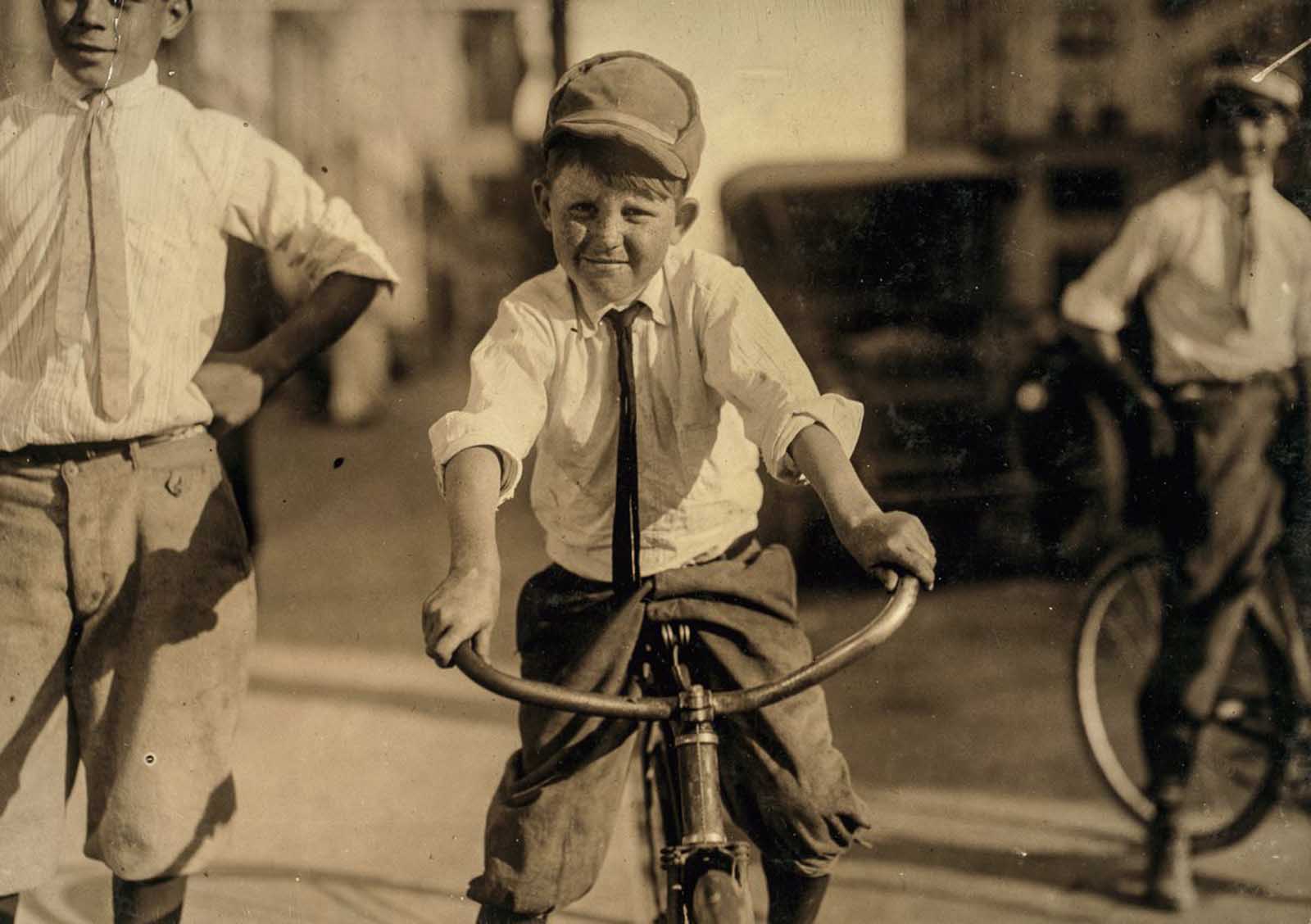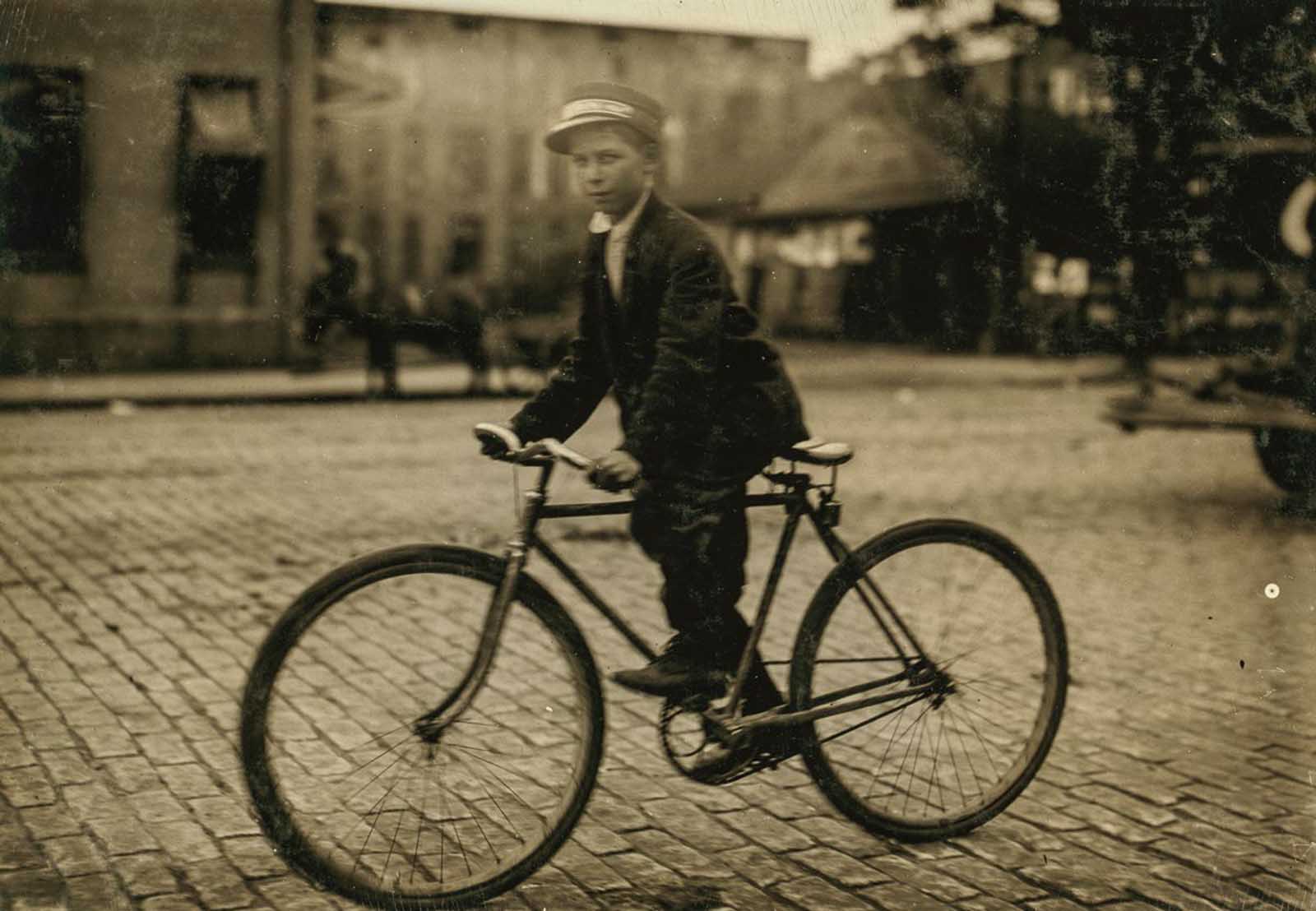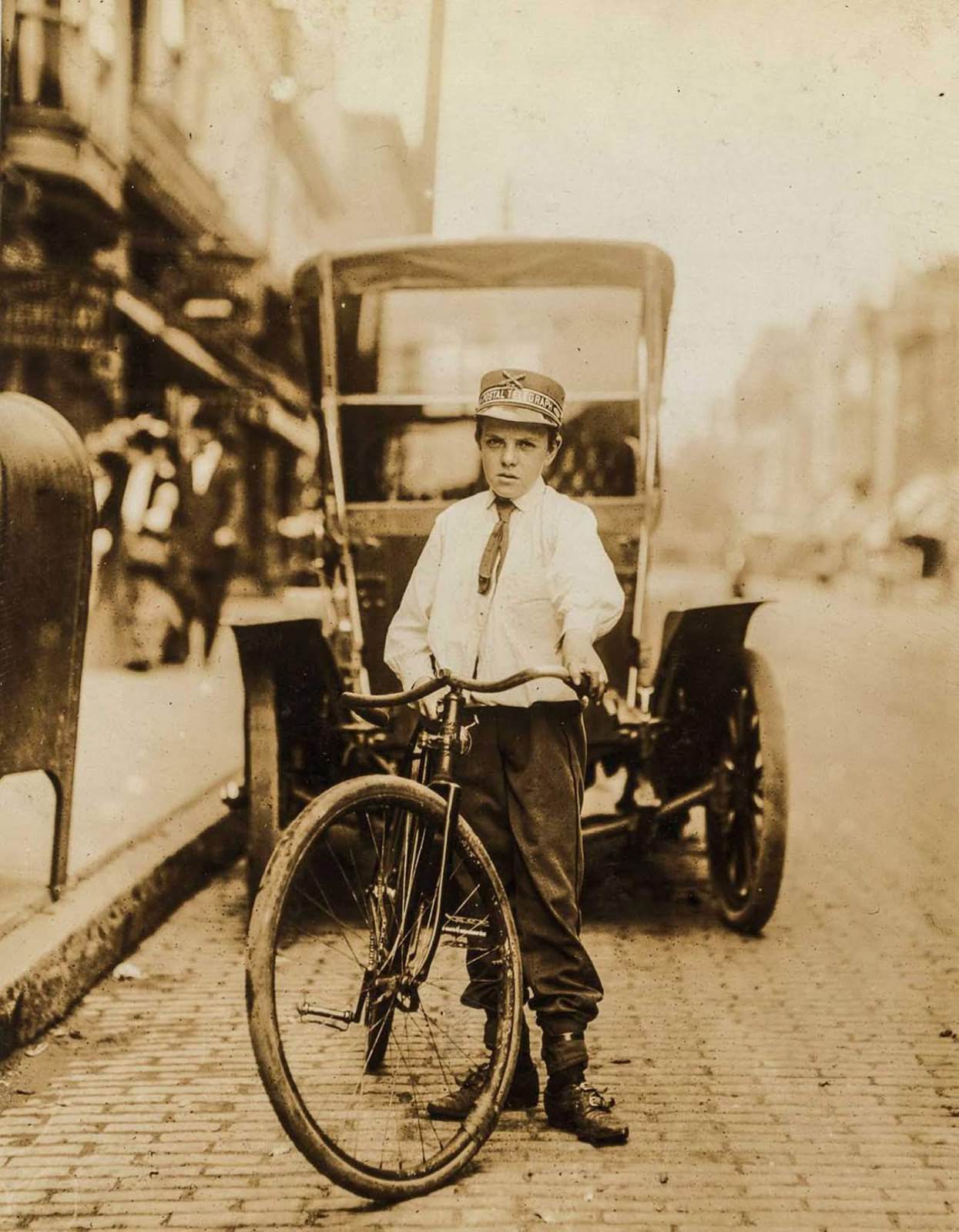Lewis Hine was a New York sociologist and photographer. He worked for the National Child Labor Committee to document the exploitative conditions of child laborers in dozens of occupations, from mining to farming to newspaper sales. He captured many workers in various southern cities, including bicycle messengers.
People began using bicycles for delivery almost immediately after the pedal-driven velocipede was developed in the 1860s. The 2004 book on the early history of the bicycle by David V. Herlihy mentions bicycle messengers who worked during the late 19th century, including a description of couriers hired by the Paris stock exchange in the 1870s. As bicycles became popular in the United States during the 1890s, Western Union hired bicycle telegraph boys in New York City, San Francisco, and other large cities.
Most messengers worked for telegraph companies or drug stores and spent exhaustingly long hours making deliveries. Hine expressed particular concerns regarding the children’s exposure to danger and vice – many of the children’s assignments took them into red-light districts filled with drug dealers and sex workers. Hine’s photos became a symbol of the child labor reform movement that ultimately led to the Keatings-Owen Act of 1916, which established limits on how old and how long young workers could work. The Supreme Court eventually struck down the act, but it set the stage for lasting reforms to be created during the New Deal of the 1930s.
#1 George Christopher, Postal Tel. #7, 14 years old.
#2 Raymond Bykes, Western Union No. 23, Norfolk, VA.
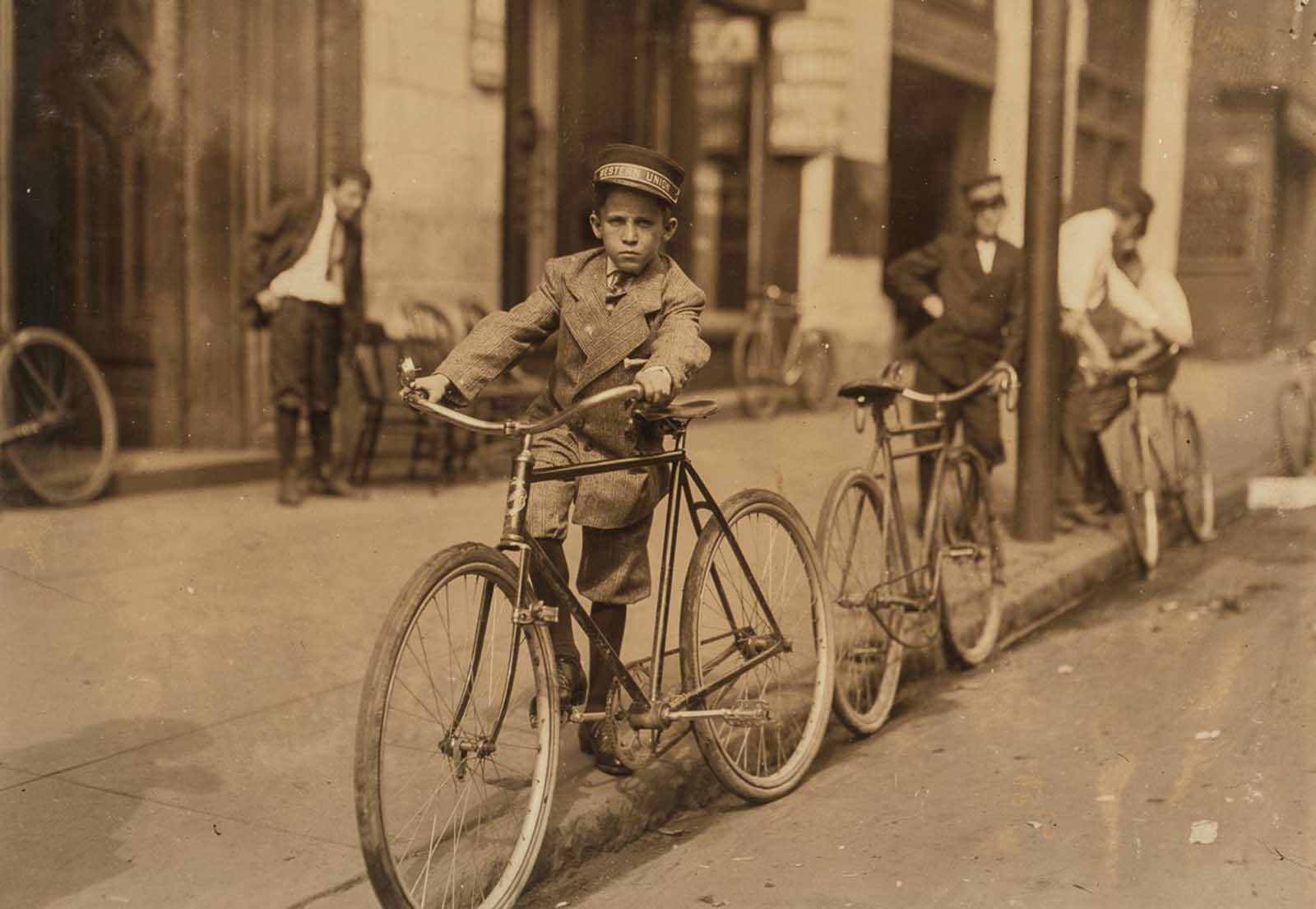
Hee was fourteen years old. Works until after one A.M. every night. He is precocious and not a little “tough.” He told me he often sleeps down at the Bay Line boat docks all night. Several times I saw his mother hanging around the office, but she seemed more concerned about getting his pay envelope than anything else.
#3 Curtin Hines. Western Union messenger #36.
#4 Percy Neville, eleven year old messenger boy.
#5 Happy but thoughtless. The messenger service is poor training for him, April, 1912.
#6 Messenger boy working for Mackay Telegraph Company. Said fifteen years old, 1913.
#7 Fourteen year old messenger #2 Western Union, Shreveport.
#8 Percy Neville, eleven year old messenger boy. Messenger boy #6 for Mackay Telegraph Company.
#9 A typical messenger boy in New Orleans. The telegraph companies are trying to obey the law, and few violations occur, November, 1913.
#10 Howard Williams, thirteen year old delivery boy for Shreveport, La. Drug Company.
#11 Fifteen year old delivery boy for Linders Drug Store.
#12 Percy Neville in the heart of the Red Light district.
#13 Postal Telegraph boy, Danville, Va.
#14 Luther Wharton, drug store delivery boy, twelve years old. Works from 4:00 P.M. to midnight in Sommers Drug Store.
#15 Postal Telegraph messenger. Location: Birmingham, Alabama, November, 1910.
#16 A typical Birmingham messenger, October, 1914.
#17 Red Line messenger service…. Location: Sacramento, California, May, 1915.
#18 Young messenger in New Bedford, Massachusetts, August, 1911.
#19 A.D.T. Messenger Boy, Indianapolis, 10 P.M.. August, 1908.
#20 Young messenger making an office call. Location: Washington. D.C.”. April, 1912.
#21 Marion Davis, Messenger #21 for Bellevue Messenger Service. Fourteen years old.
#22 Fourteen year old Western Union Messenger #43. Works until 10:30 P.M. Goes to Reservation some. Location: Houston, Texas”, October, 1913.
#23 Leo Day, Postal Telegraph Messenger, 12 years old, and a very knowing lad. Location: Tampa, Florida, March, 1911.
#24 Hodges Gallop, Western Union Messenger No. 16, Norfolk, VA.
#25 Hodges Gallop, Western Union Messenger No. 16, Norfolk, VA.
#26 Wilbur H. Woodward, Washington, D.C., Western Union messenger 236, one of the youngsters on the border-line, (15 yrs. old) works until 8 P.M. only”. April, 1912.
#27 Earle Griffith and Eddie Tahoory, working for the Dime Messenger Service.
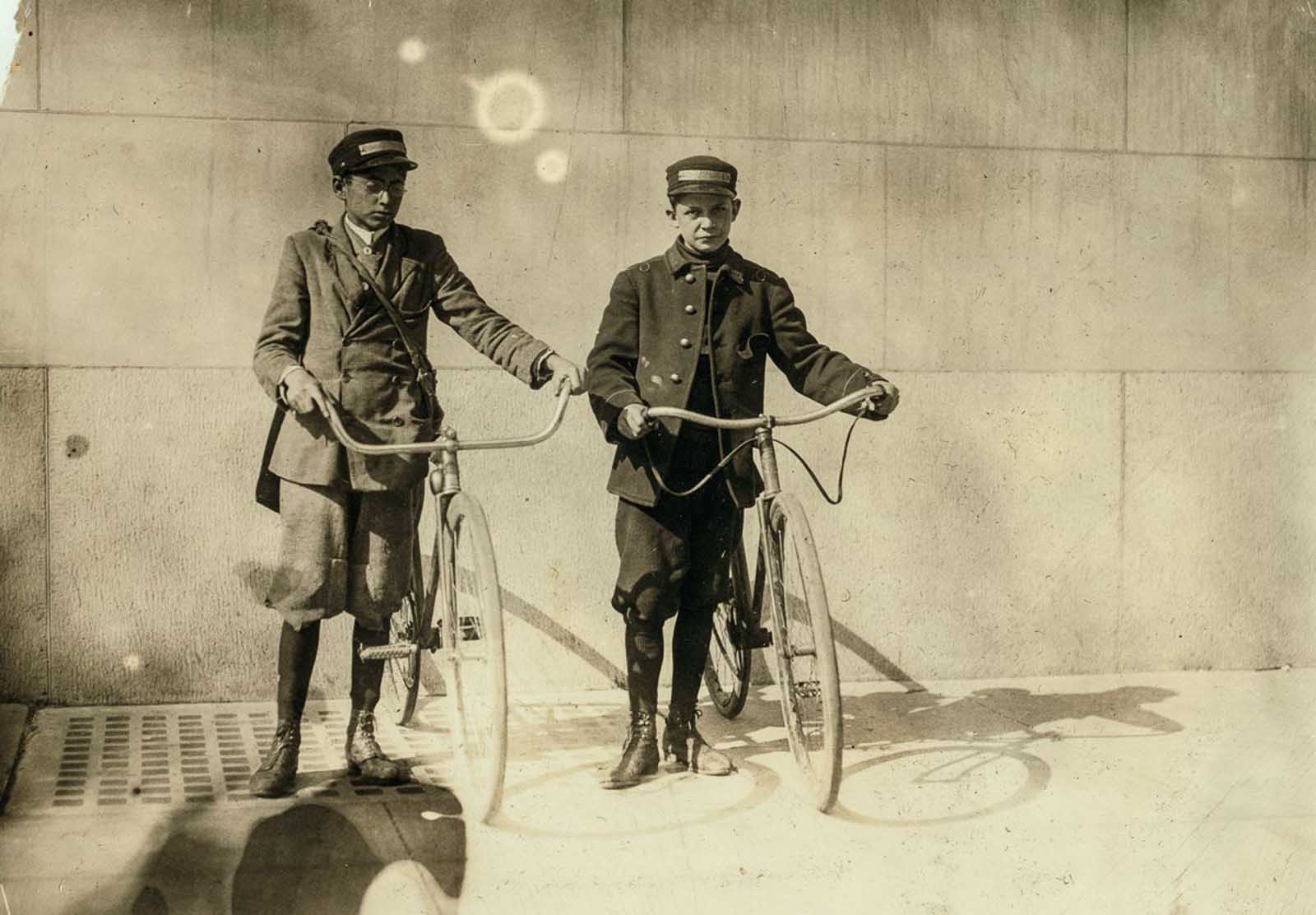
They said they never knew when they were going to get home at night. Usually work one or more nights a week, and have worked until after midnight. They said last Christmas their office had a 9 yr. old boy running errands for them, and that he made a great deal of money from tips. They make about $7 a week and more, sometimes. Said “‘The office is not allowed to send us into the red light district but we go when a call sends us. Not very often. April, 1912.
#28 Preston DeCosta, fifteen year old messenger #3 for Bellevue Messenger Service.
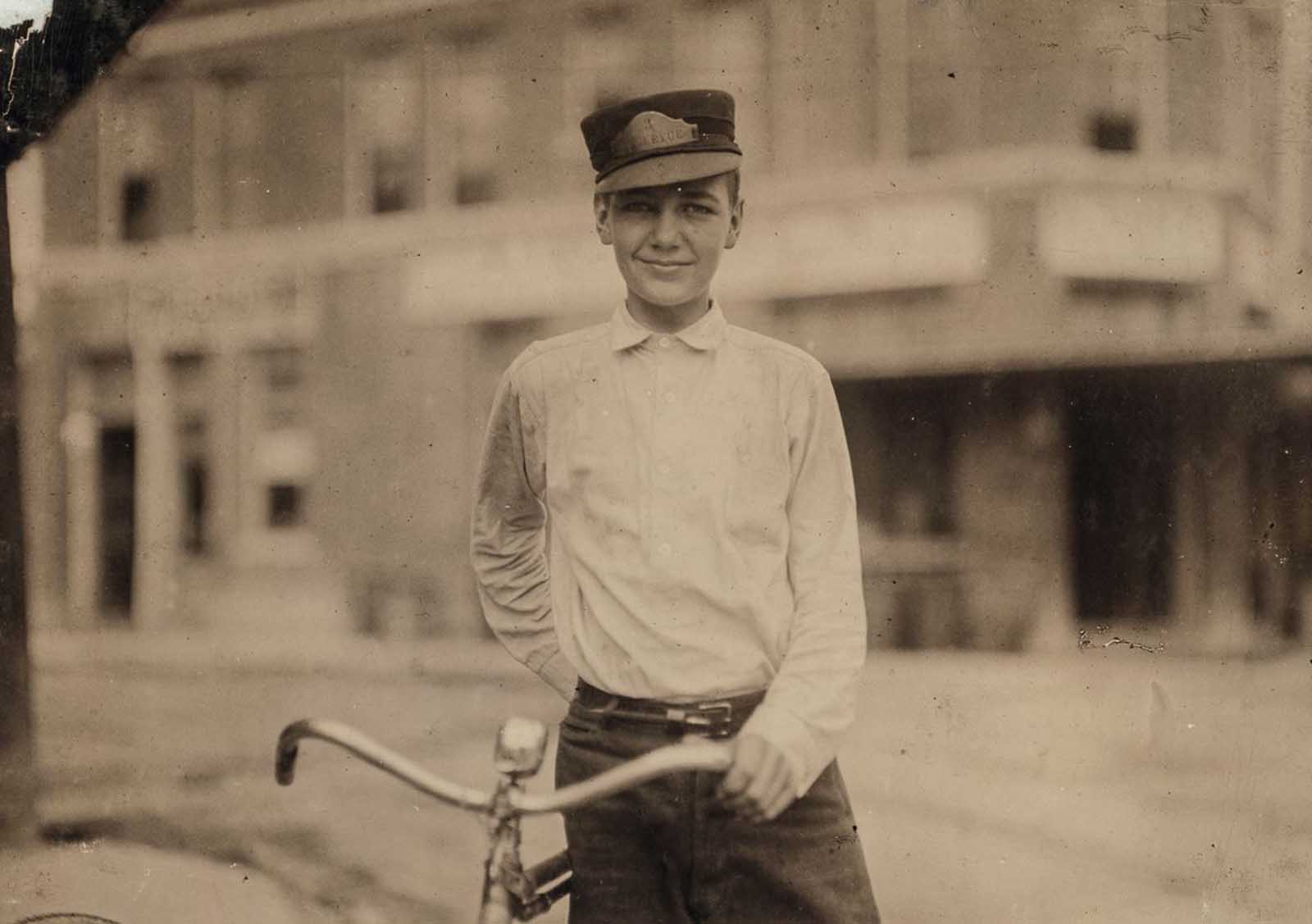
I ran across him and took photos while he was carrying notes back and forth between a prostitute in jail and a pimp in the Red Light. He had read all the notes and knew all about the correspondence. He was a fine grained adolescent boy. Has been delivering message and drugs in the Red Light for 6 months and knows the ropes thoroughly. ‘A lot of these girls are my regular customers. I carry ’em messages and get ’em drinks, drugs, etc. Also go to the bank with money for ’em. If a fellow treats ’em right, they’ll call him by number and give him all their work. I got a box full of photos I took of these girls – some of ’em I took in their room.’ Works until 11:00 P.M. Location: San Antonio, Texas. October, 1913.
#29 A typical group of Postal Messengers in Norfolk, Va. Smallest on left end, Wilmore Johnson, been there one year. Works days only. The Postal boys are not nearly so young, in Norfolk and also in other Virginia cities, as are the Western Union boys”. June, 1911.
#30 Ben Collins. Been working steady for Mackay Telegraph Co. for 1 month. 13 years old.
#31 Isaac Boyett, The twelve year old proprietor, manager and messenger of the Club Messenger Service, Waco, Texas.
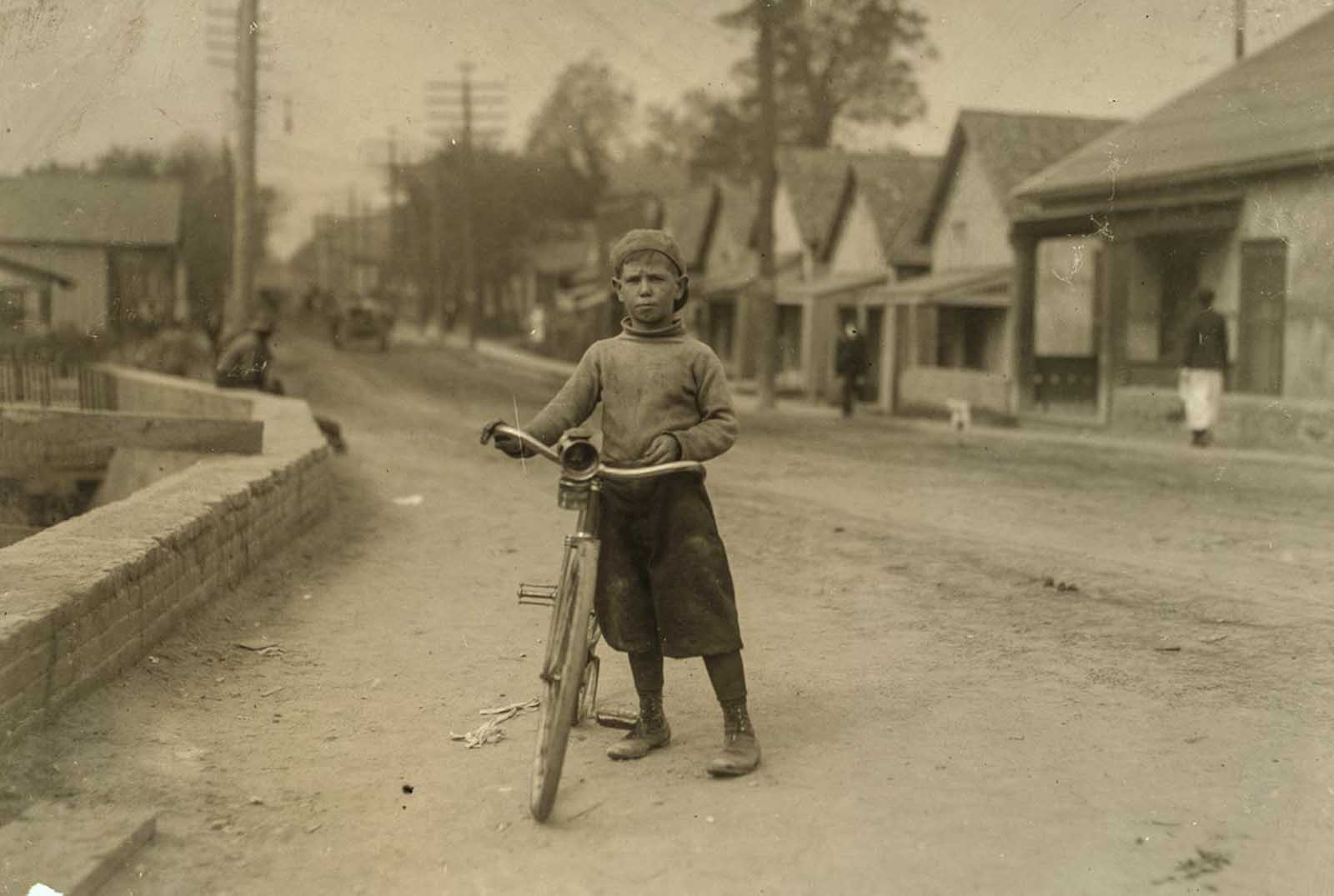
The photo shows him in the heart of the Red Light District where he was delivering messages as he does several times a day. Said he knows the houses and some of the inmates. Has been doing this for one year, working until 9:30 P.M. on Saturdays. Not so late on other nights. Makes from six to ten dollars a week. November, 1913.


